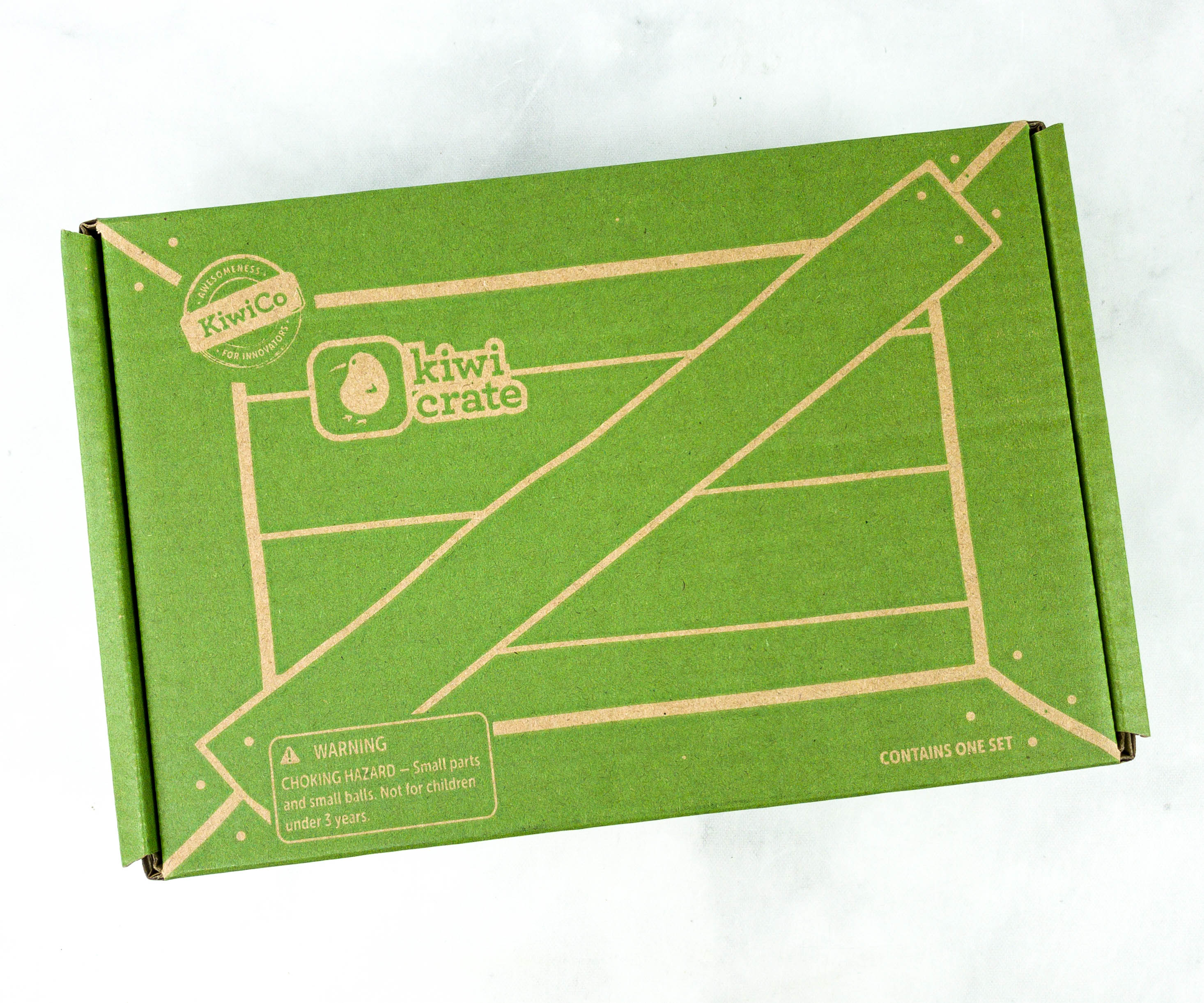
Kiwi Crate is a kids’ craft and activity subscription that comes with everything you need to complete a great project or two, usually a pair of crafts that can be used as toys or playtime props. The box is geared for ages 5-8, and the projects are always age-appropriate, though some require more parental assistance than others.
Kiwi Crate is the most popular craft and activity subscription box for kids!
DEAL: Use this link to save 30% on your first box of Kiwi Crate! (or KiwiCo family subscriptions Tinker Crate, Koala Crate, Atlas Crate, Cricket Crate, Doodle Crate, and Maker Crate).
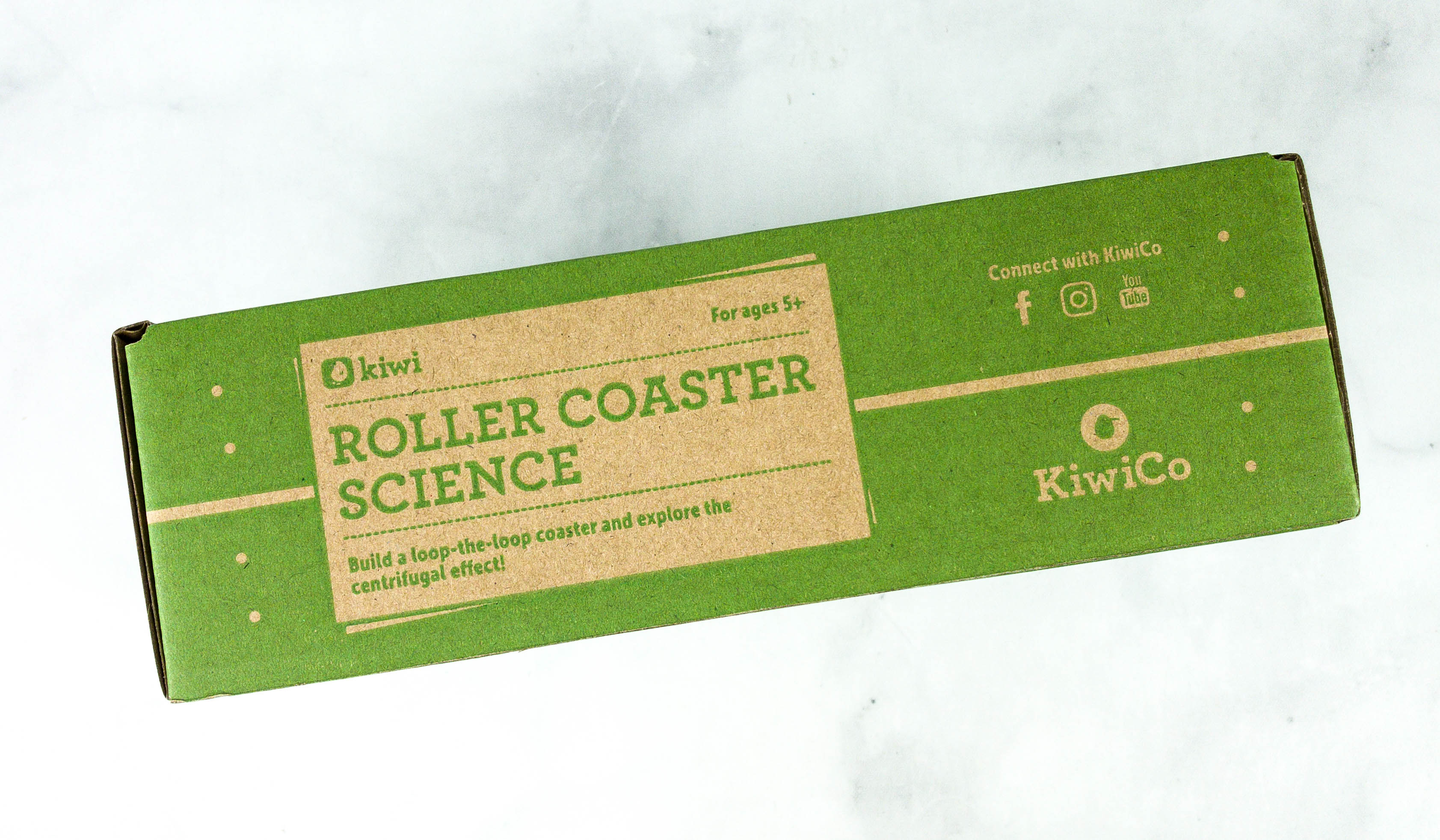
This month’s theme is ROLLER COASTER SCIENCE!
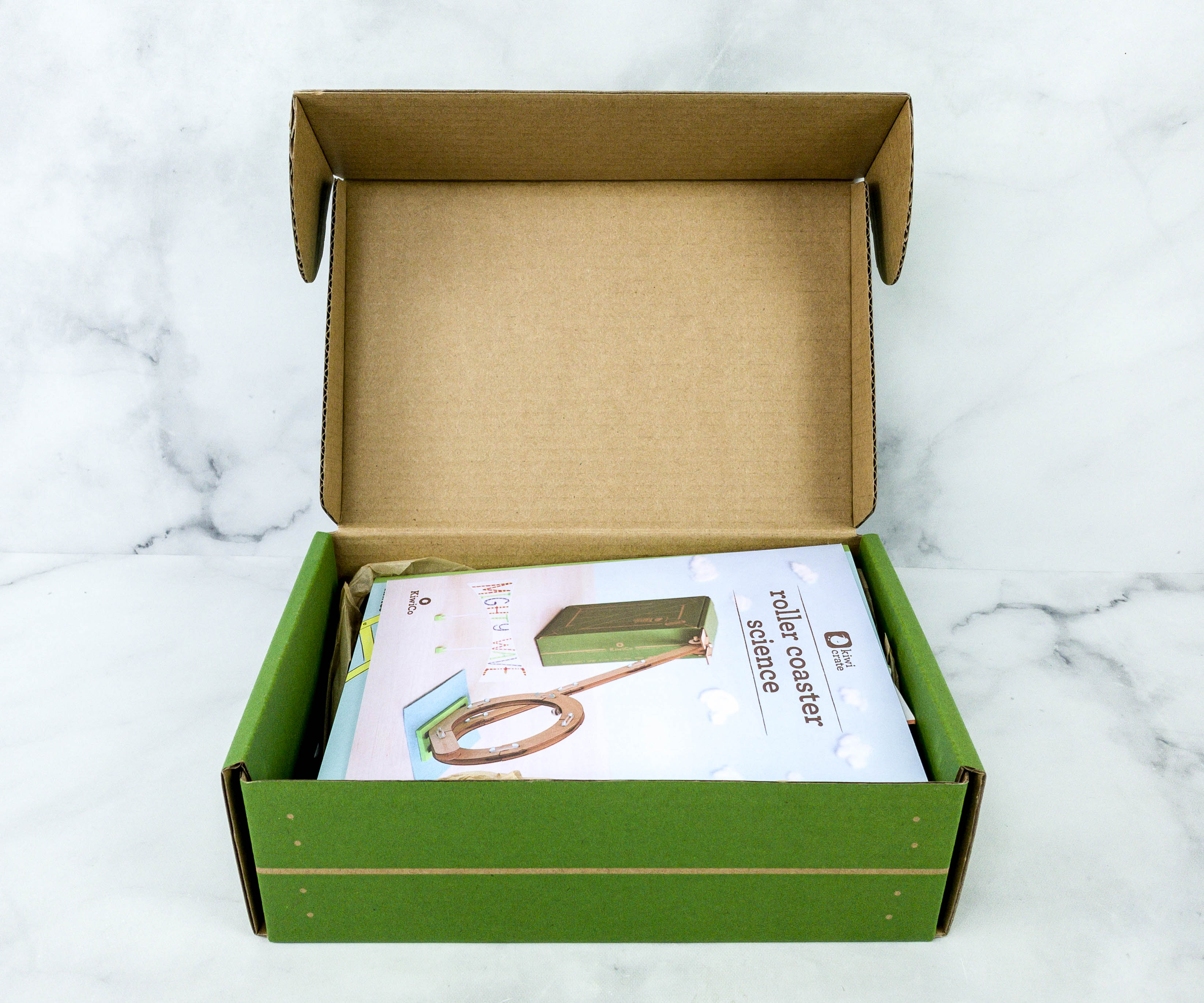
Kiwi Crate includes all the necessary supplies for the featured activities, plus explore! magazine.
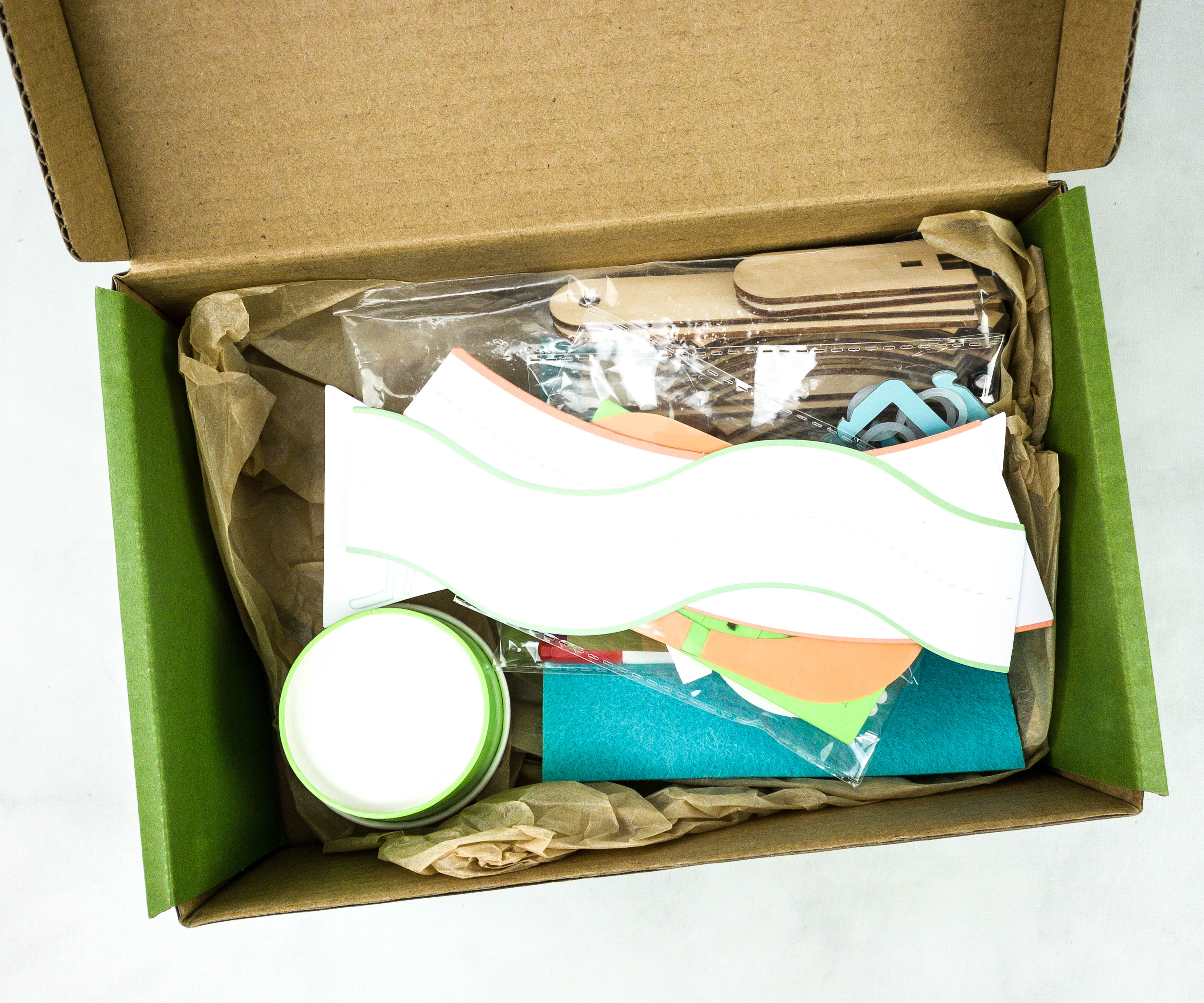
Everything was neatly packed in the box.
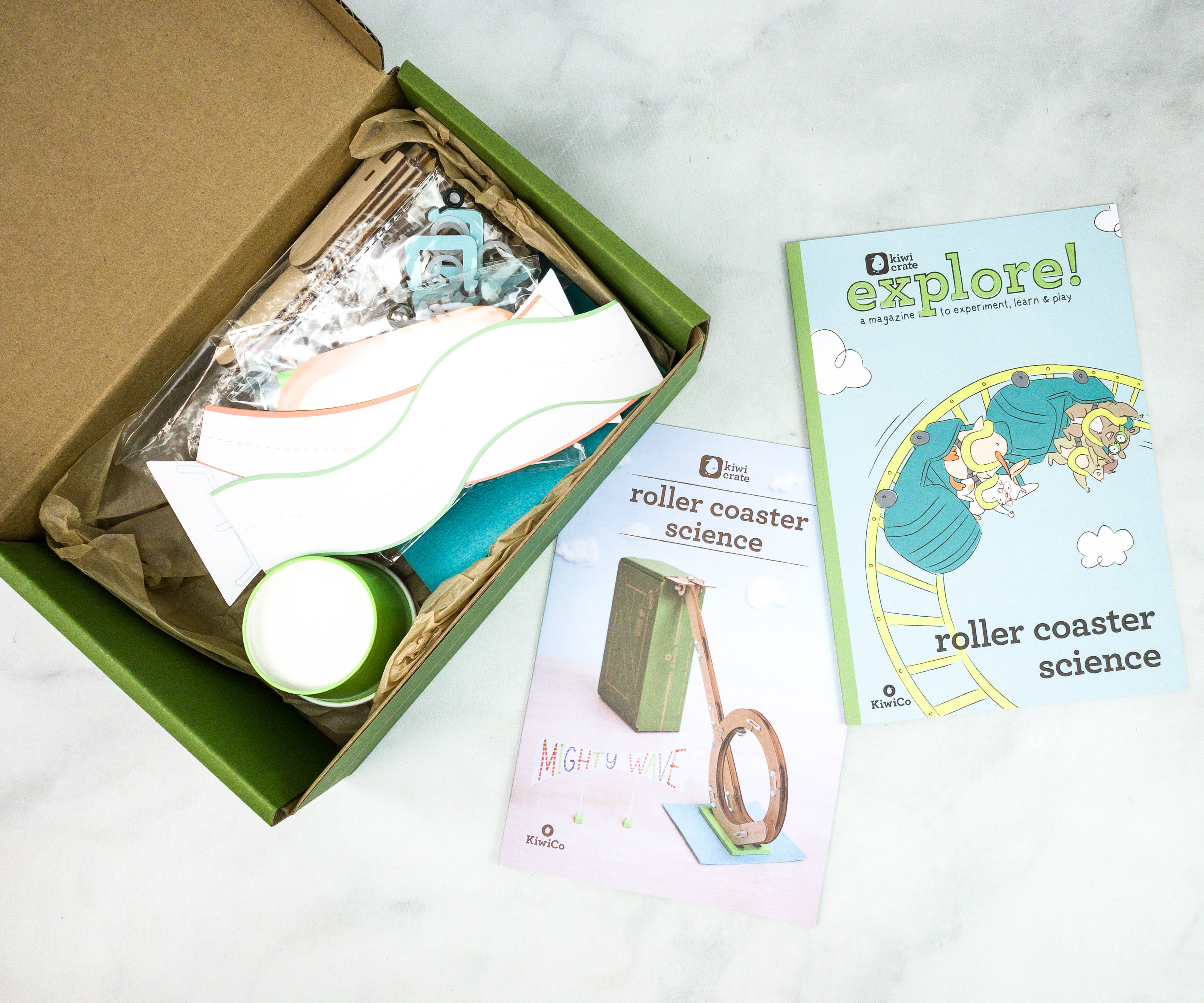
Some of the materials were also packed in plastic.
Explore! Magazine
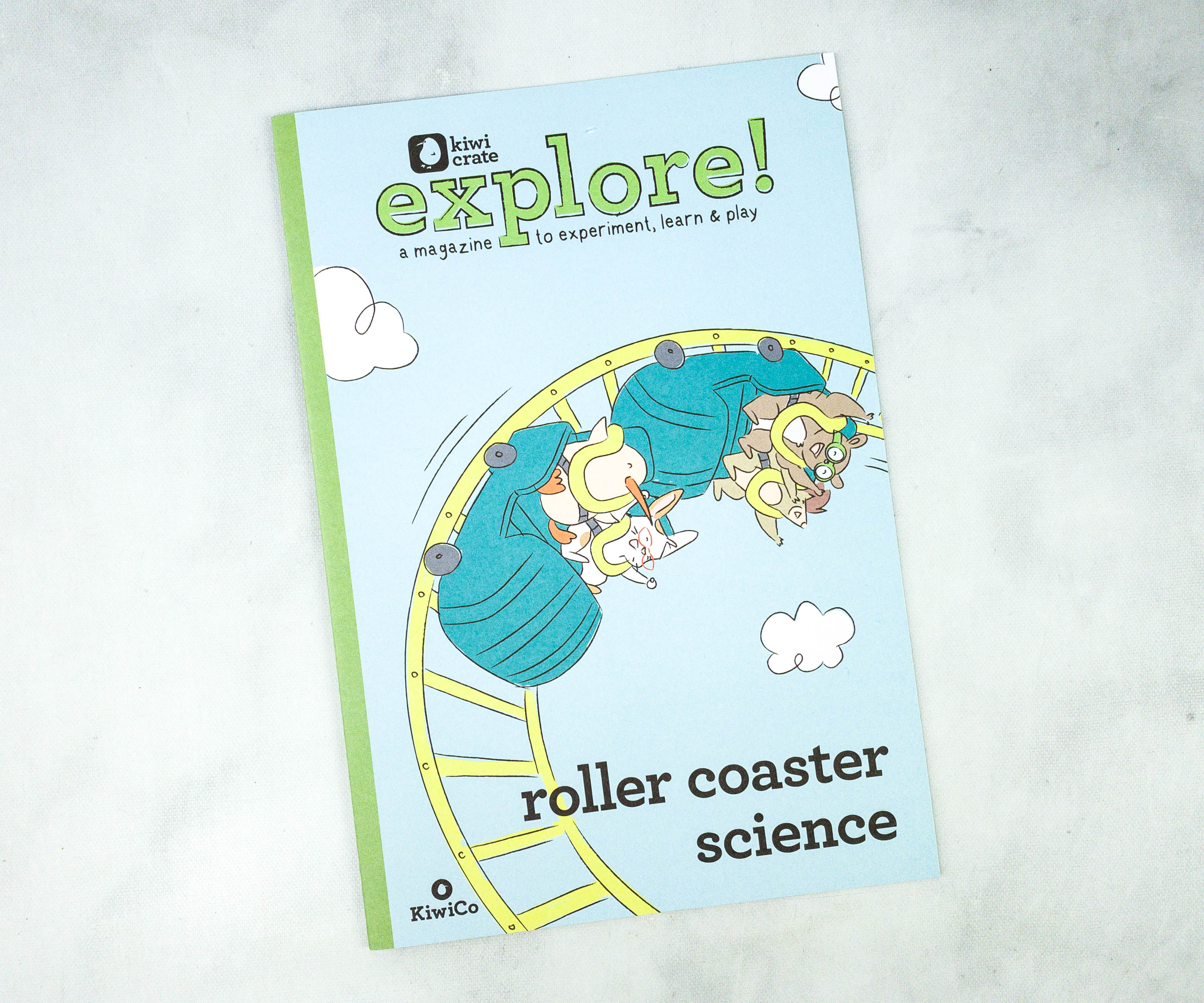
An issue of explore magazine is included in every Crate. It is full of fun content that brings the project to life. explore! has read, draw, learn, explore, eat, and make designated activities. There is really a lot to look at and read – a comic, puzzles, and games – and it really extends your young one’s engagement with the Crate. Each expands on the theme of the box, whether through factoids, drawing activities, or recipes, but the variation is helpful for engaging different learning styles and interests.
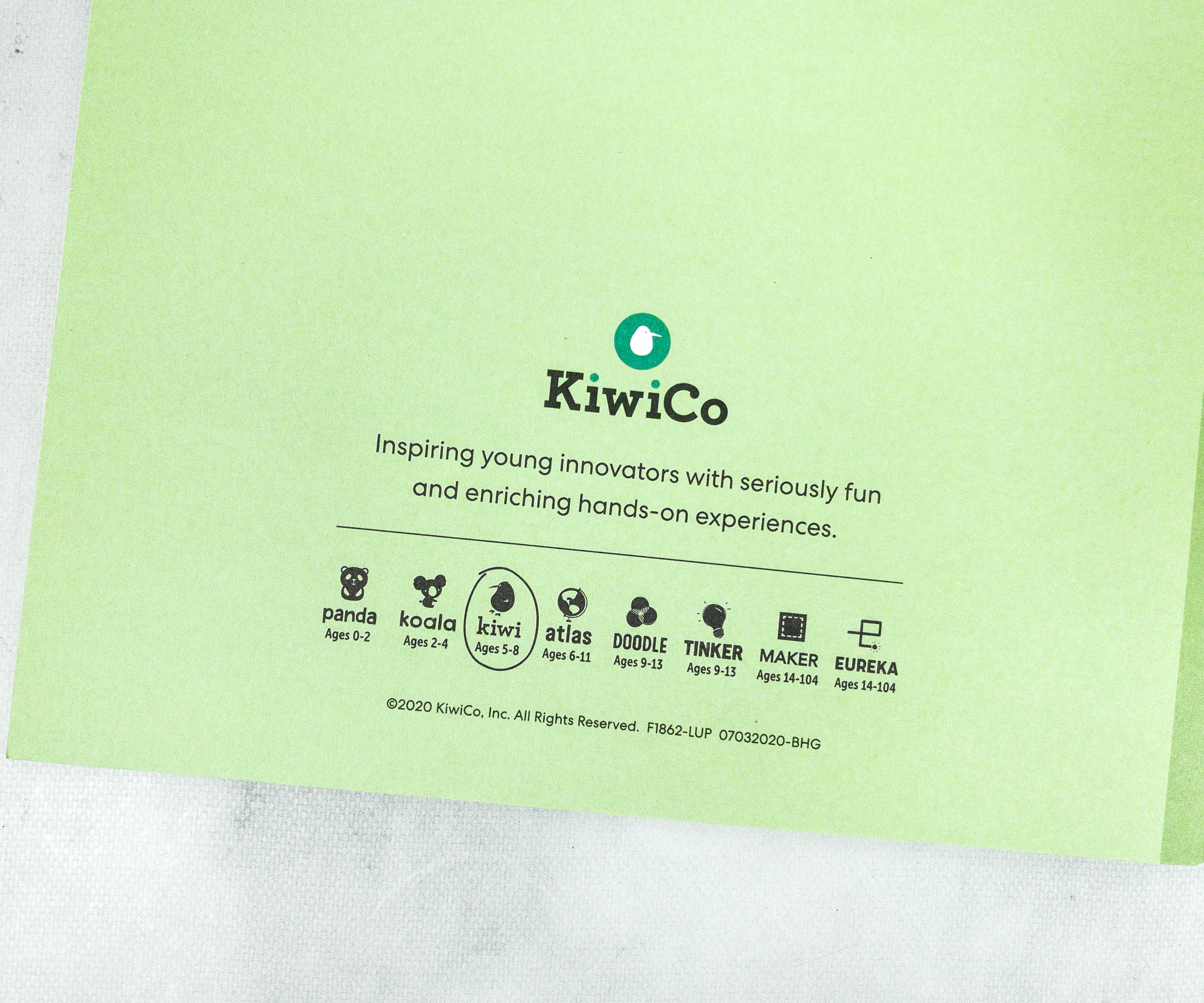
KiwiCo, Inspiring young innovators with seriously fun and enriching hands-on experiences.
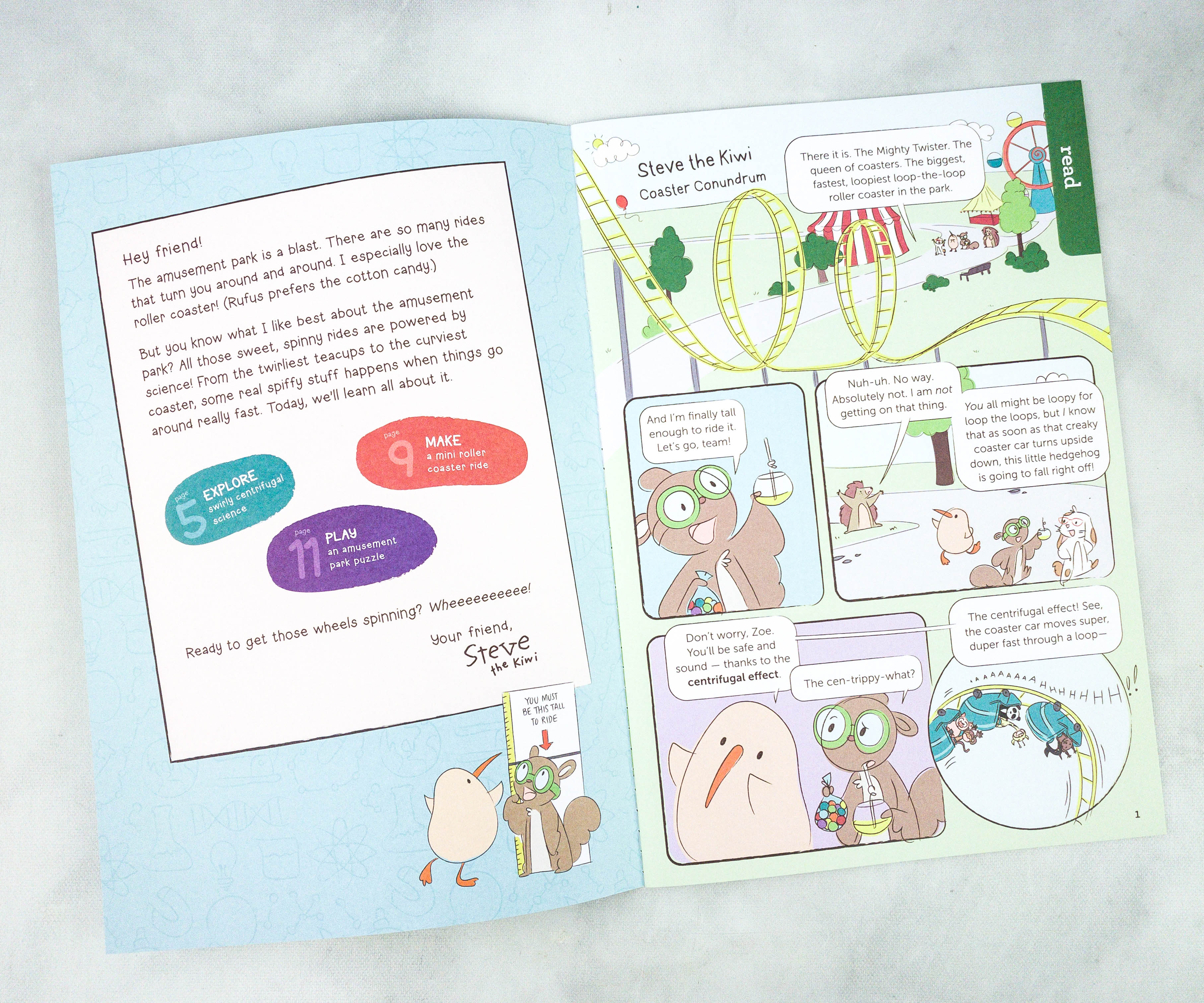
There is always a comic featuring Steve the Kiwi and his pals.
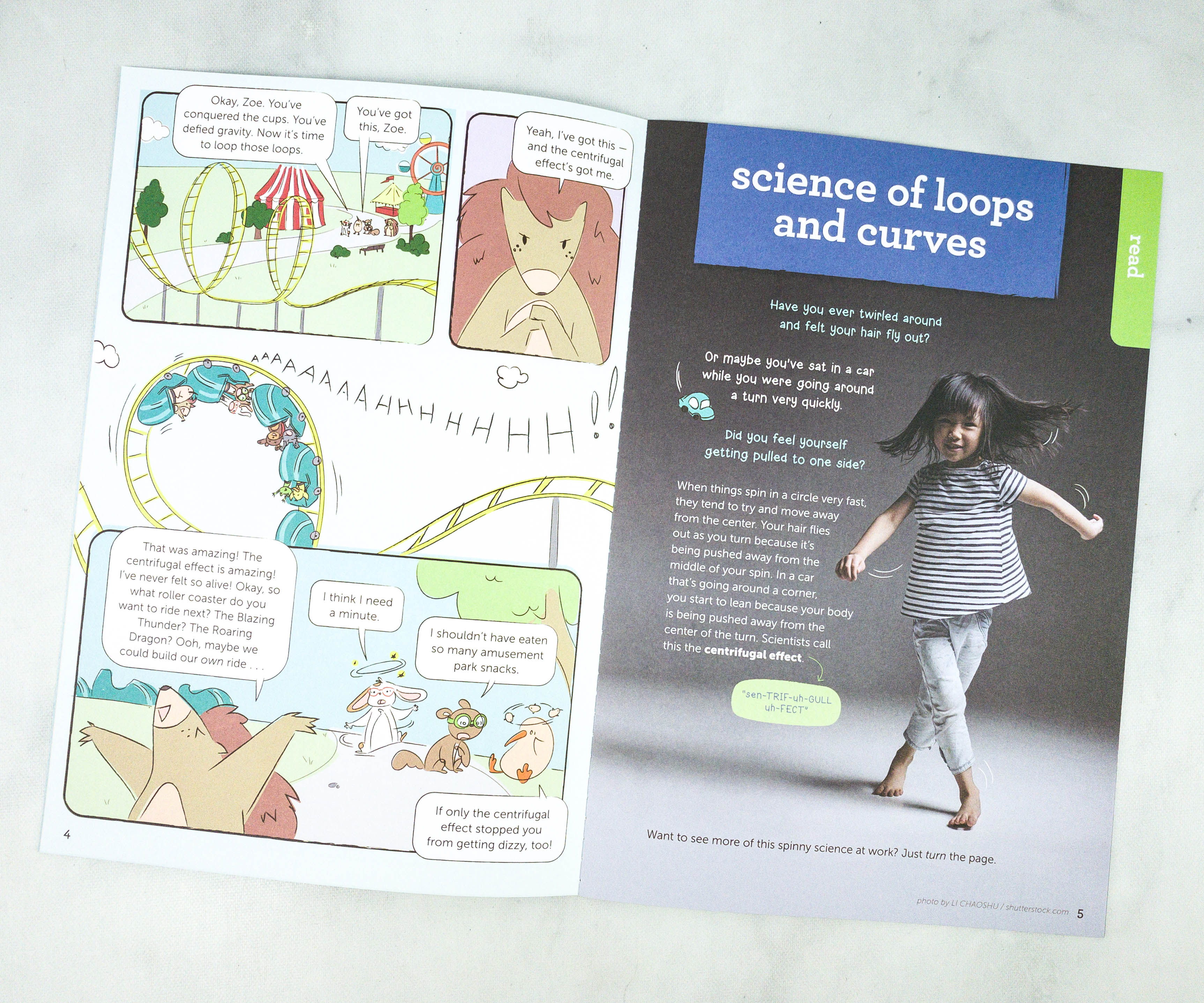
This magazine also includes a lot of historical and scientific information relating to the current theme, including the science of loops and curves!
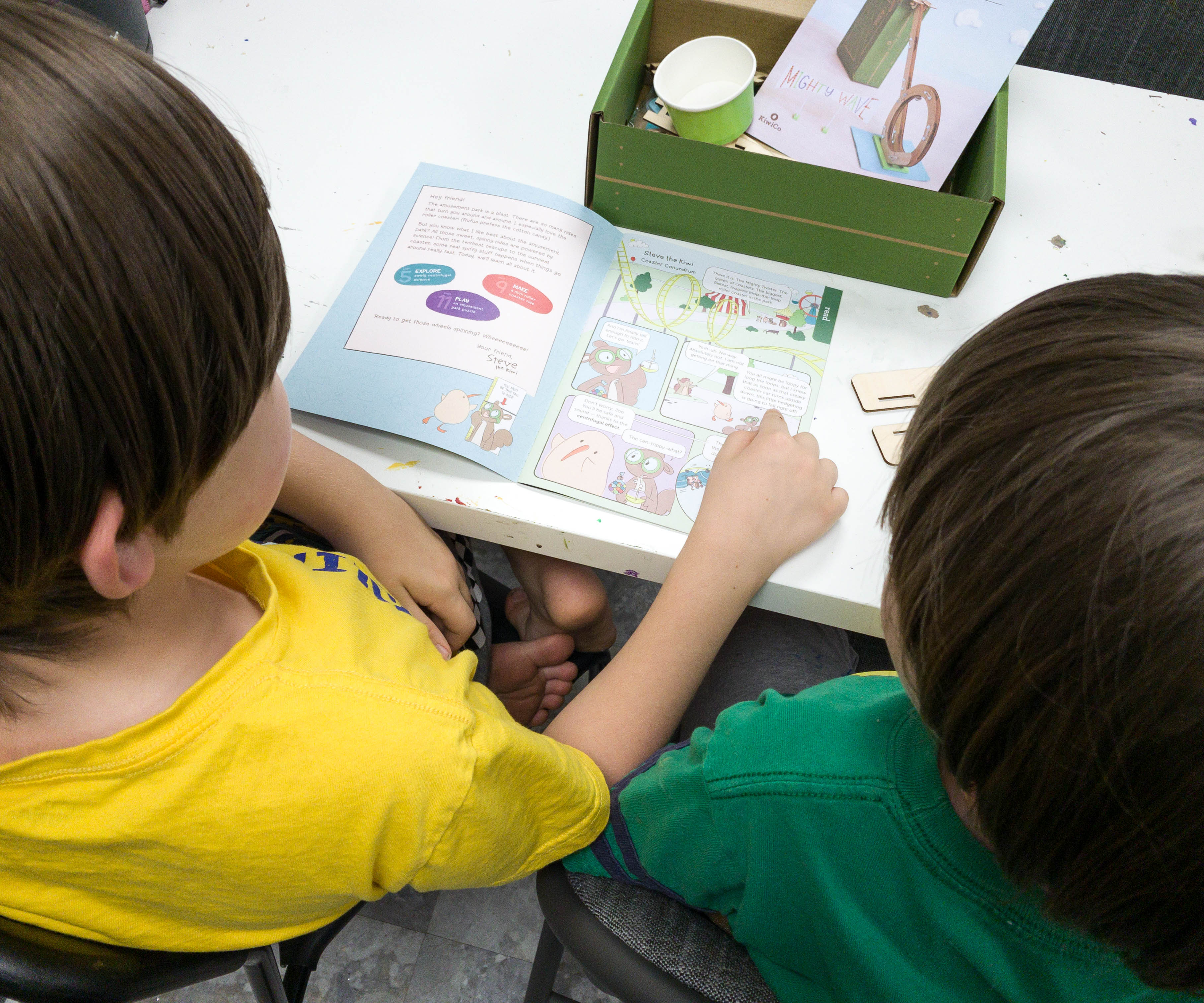
My kids loves reading the magazine, they find it very interesting!
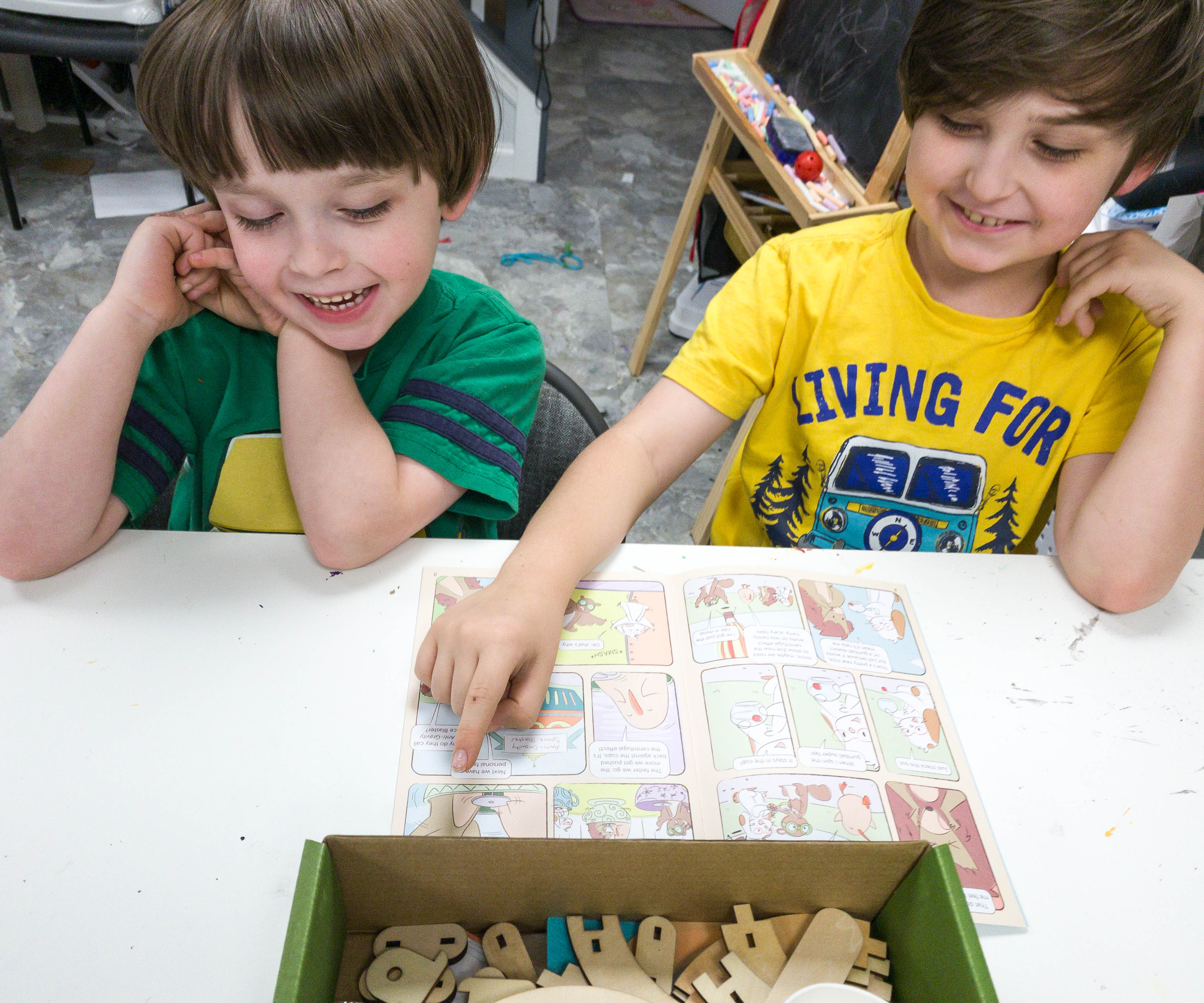
Their favorite part of the magazine is the comic strip with Steve the Kiwi.
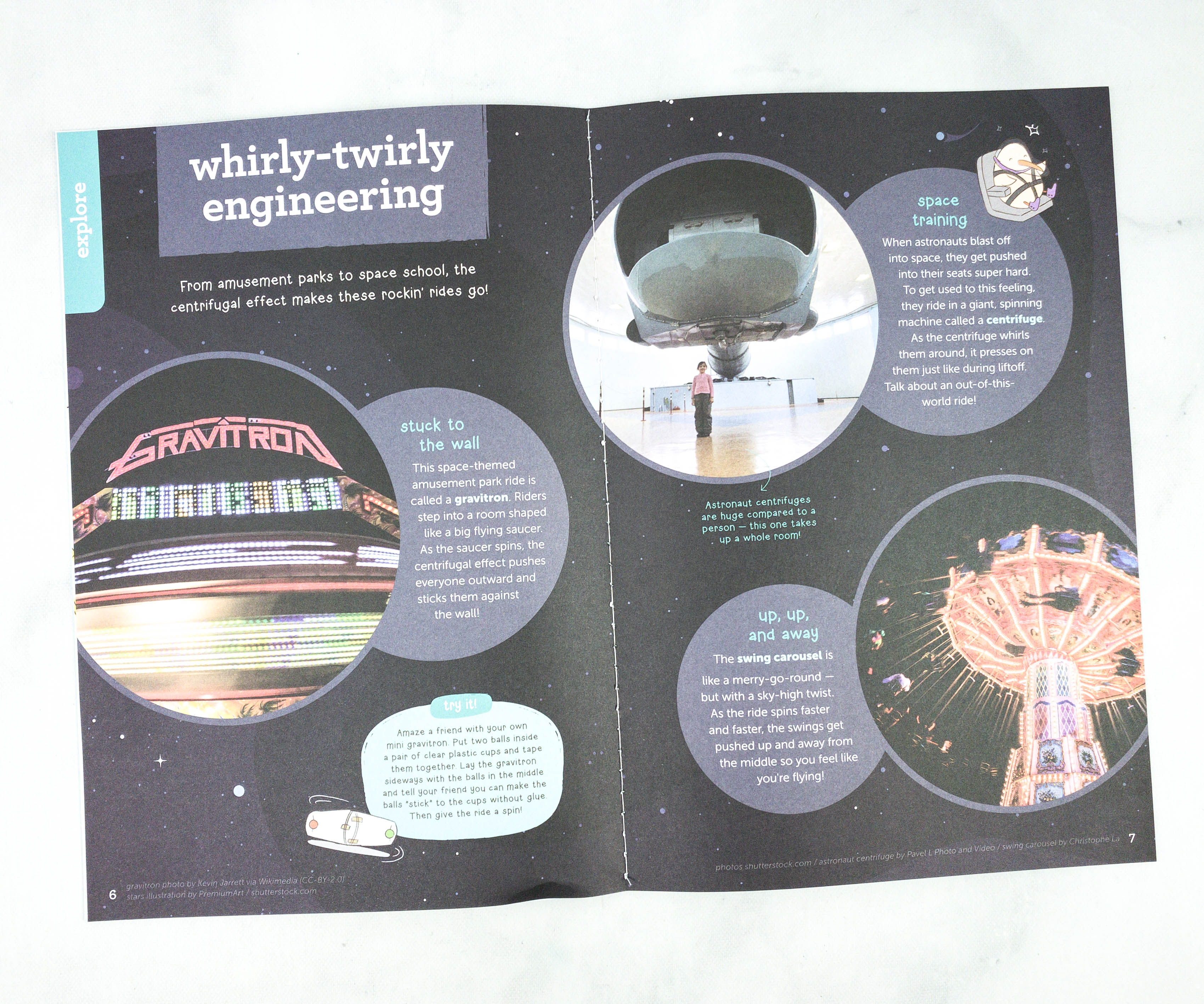
This part of the booklet features everything you need to know about the centrifugal force and how it is used on different amusement park rides!
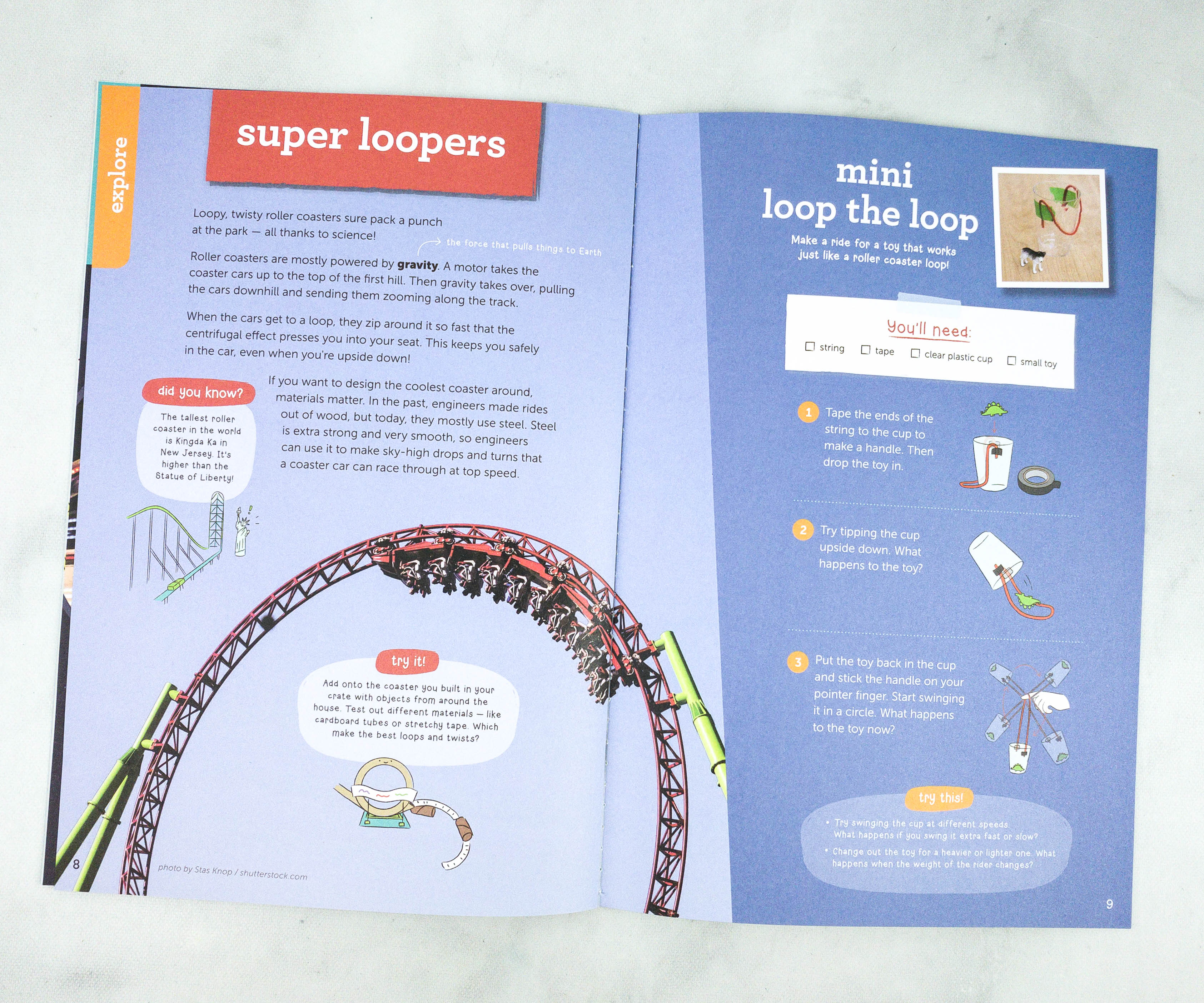
One of the coolest rides in an amusement park that uses centrifugal force is the roller coaster. Featured on this page is highest roller coaster ever made, the Kingda Ka roller coaster ride in New Jersey! It’s said to be way higher than the Statue of Liberty!

To check how centrifugal force works, they suggested a mini-activity called Twirligig. For this, the kids would need cardboard, cup, string, unsharpened pencil, beads, scissors, and tape. There’s also a fun activity on the opposite page, which is the Roller Coaster Redo. In this activity, the kids just need to find the differences between the provided illustrations.
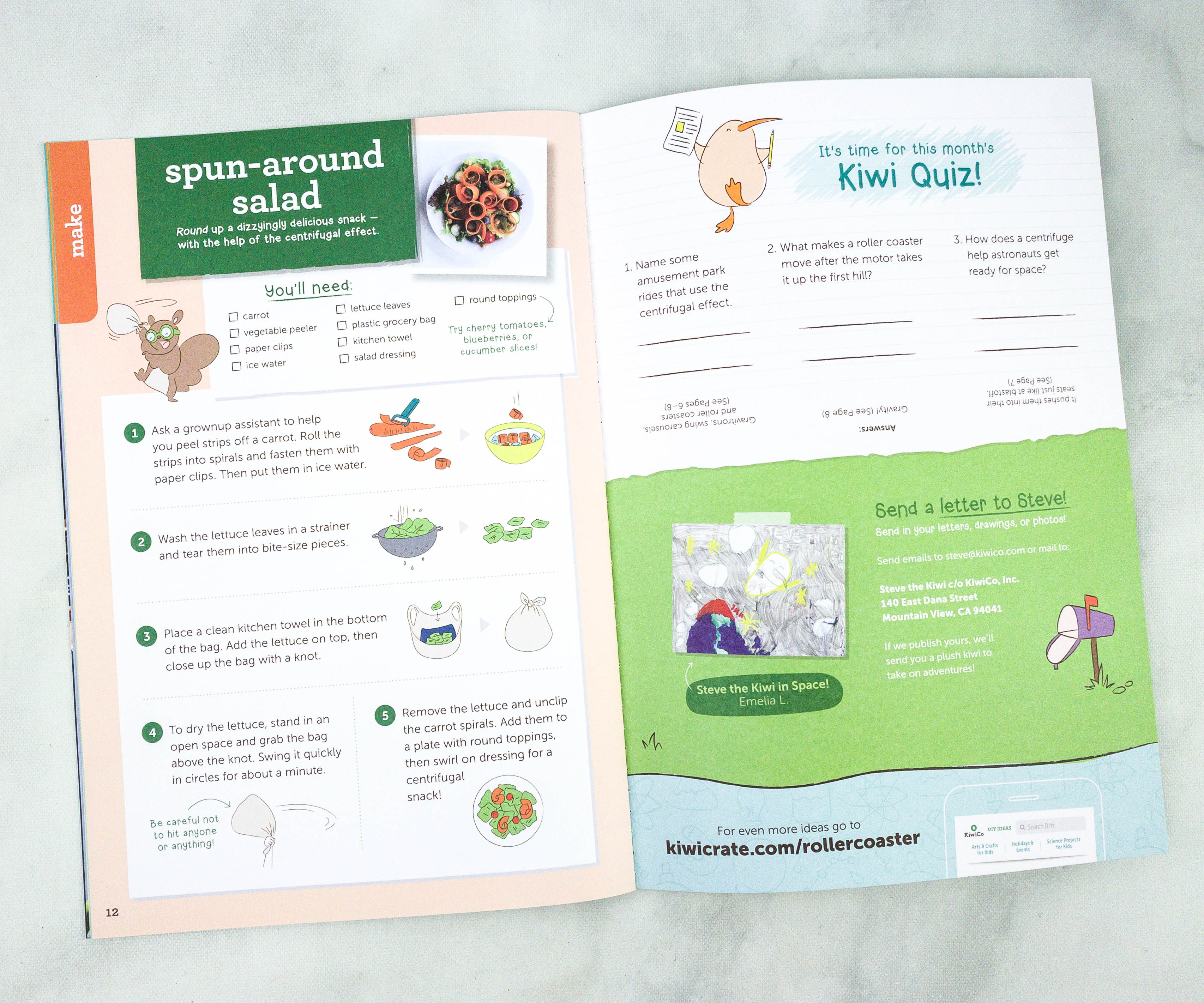
The booklet even introduced a unique recipe that is closely related to this month’s theme, the Spun-around Salad! Also, there’s a Kiwi quiz on the next page and instructions on how to send a letter to Steve.
Kiwi Crate Crafts
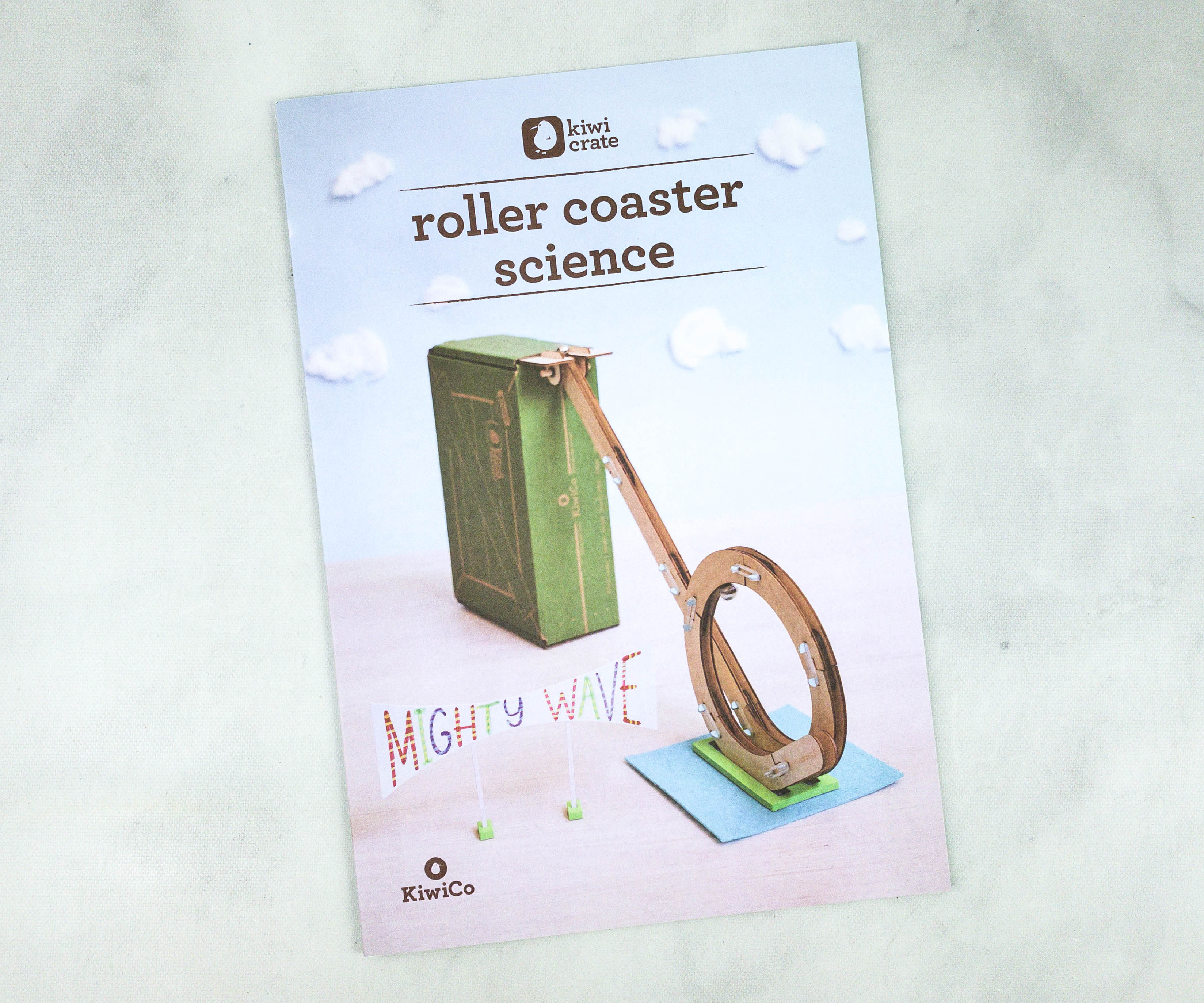
The second booklet that comes in every crate is the actual instruction booklet for the crafts, and it often includes additional activities beyond the extension projects included in explore!

Every Kiwi Crate comes with a unique Steve sticker (like your merit badge for completing the box). The first box of an annual subscription includes a poster for displaying your earned stickers.
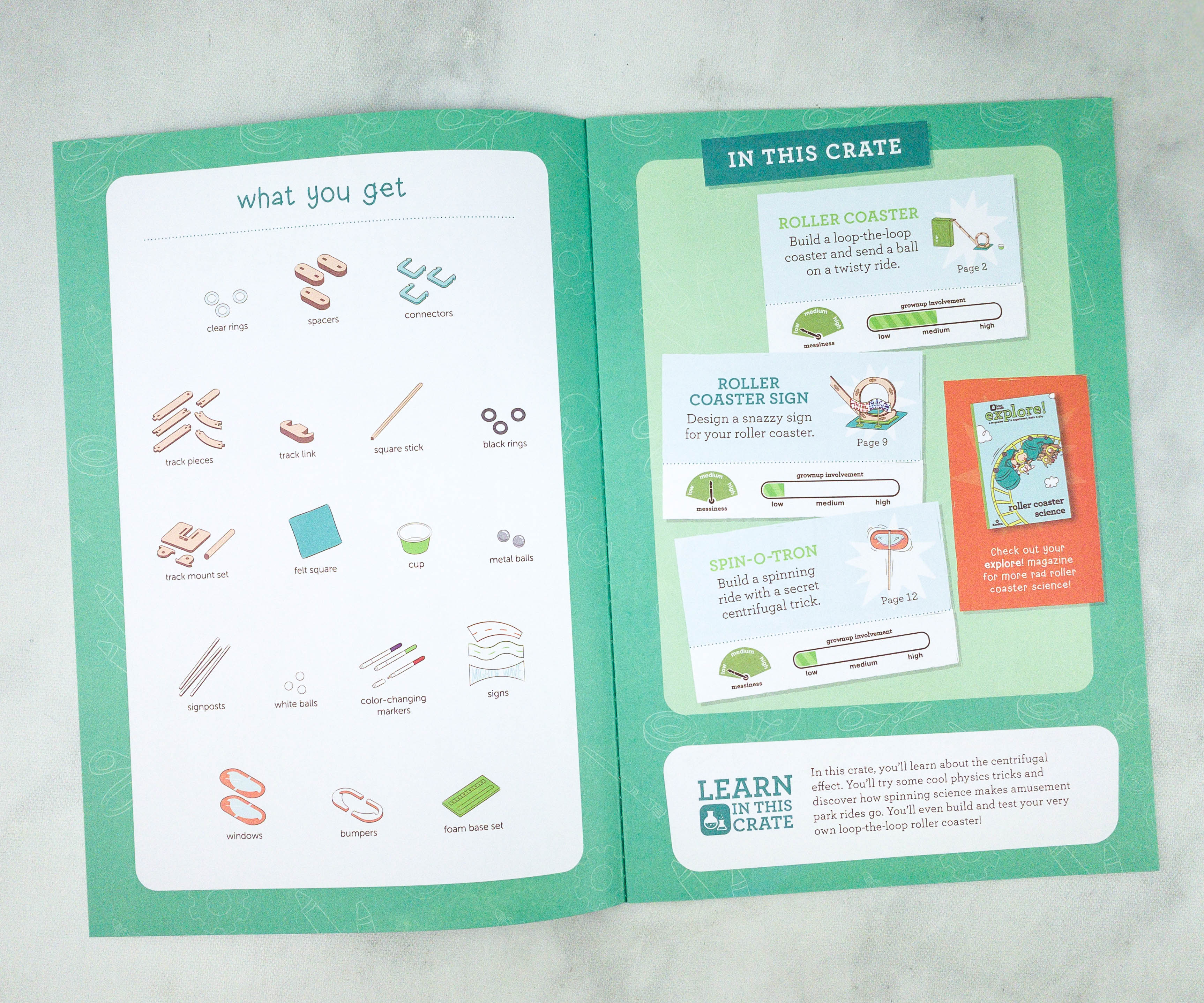
The booklet contains a list of all the supplies they provided for the crafts. It also has a rating of messiness and parental involvement for each activity.
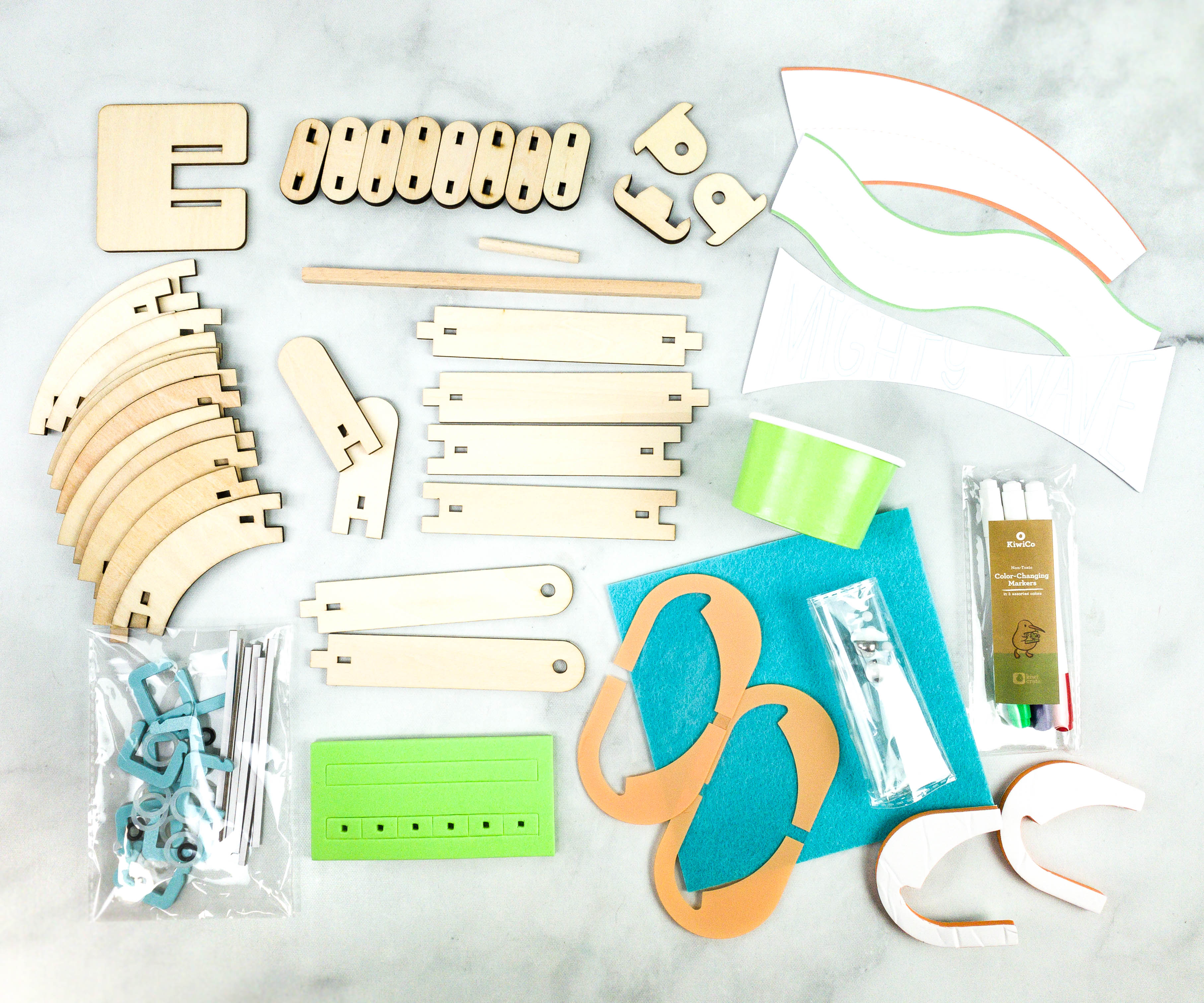
Here are all the items for this month’s Roller Coaster Science project!

Roller Coaster Science is a 2-part project. The first part of the project is building the starting ramp.
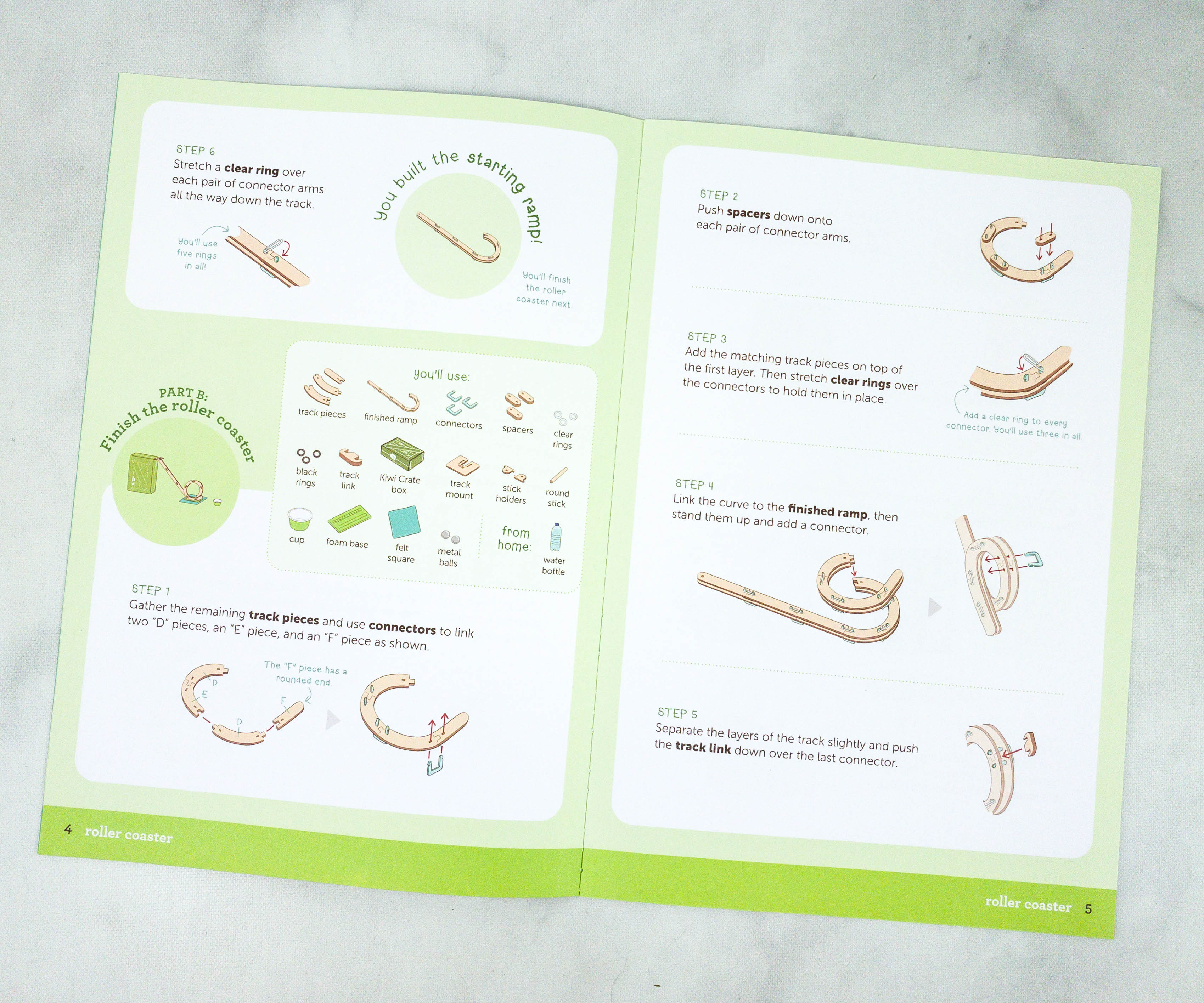
The second part of the project is completing the roller coaster.

The provided materials in the crate are wooden track pieces, paper cup, track mount set, track link, spacers, clear rings, black rings, connectors, metal balls, and square-shaped felt paper.
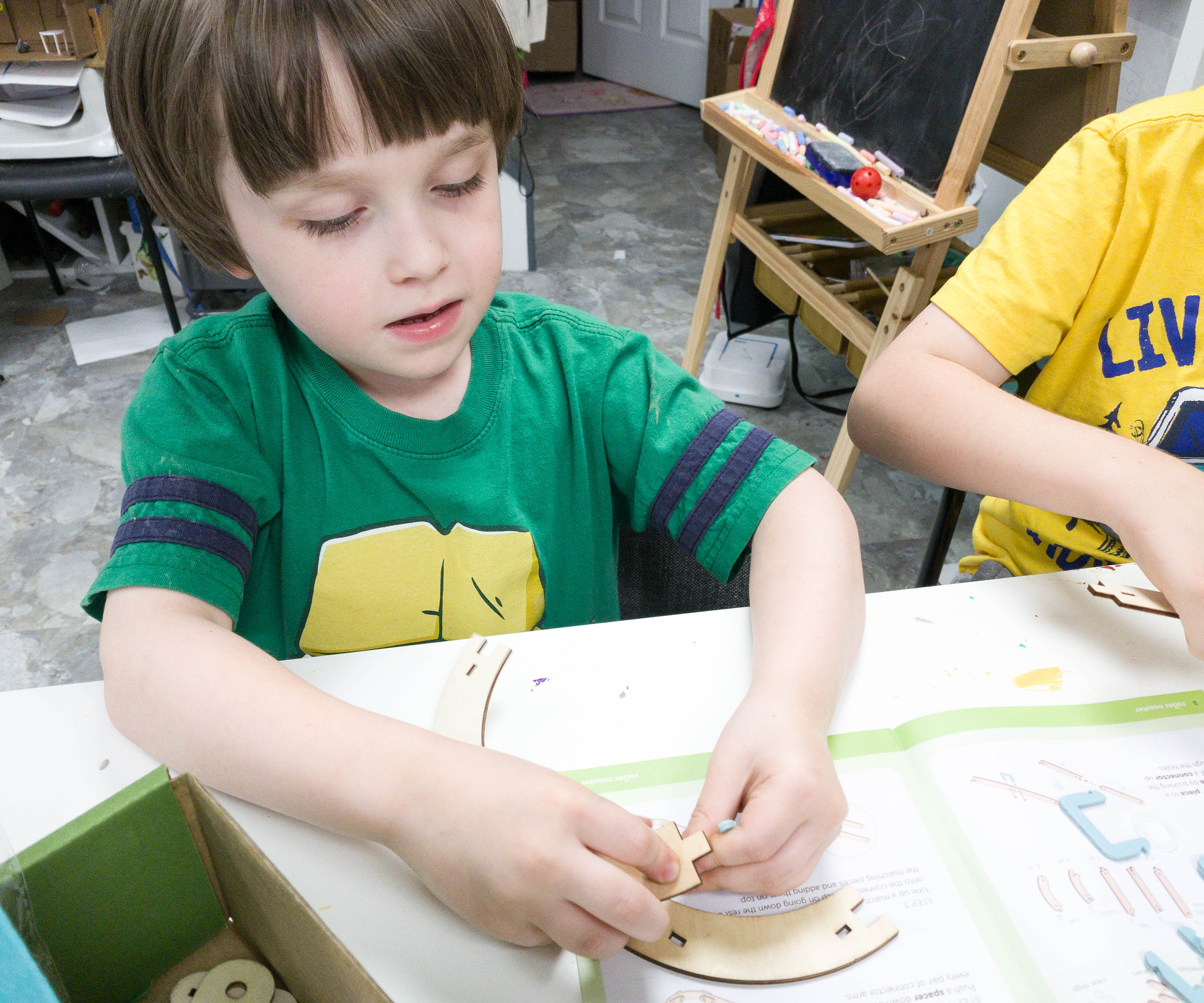
My older son started by collecting the wooden pieces and connecting them with each other, which is just like putting together a jigsaw puzzle.

Once they are sure that they have the right pieces, my older son hooked them up using the blue connectors.

My son took the wooden spacers and pressed them through the blue connectors.
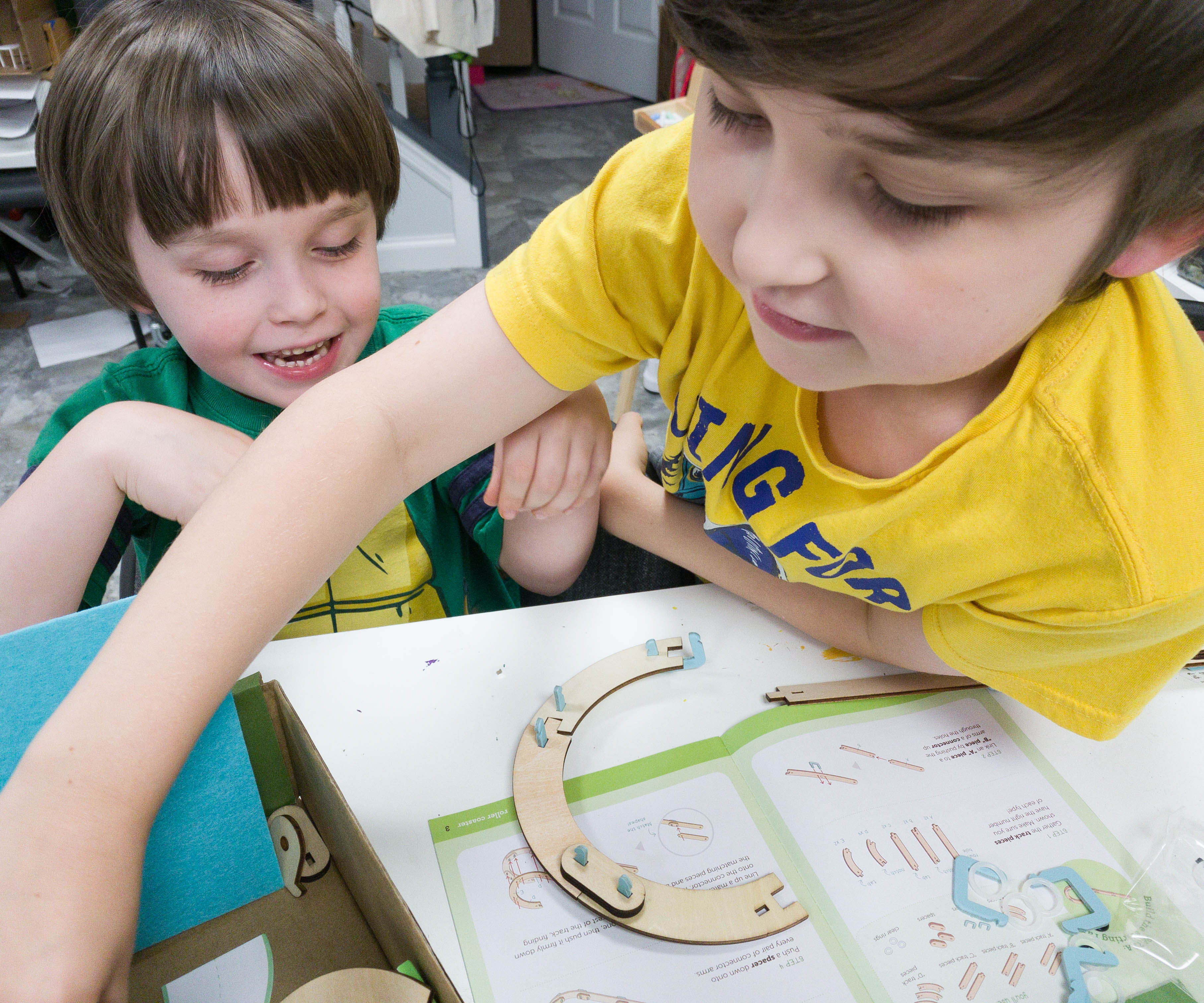
They repeated the same procedure on the next track connections.

They also made sure that the spacers are locked-in to avoid an unwanted detachment that may result to possible destruction of the structure.

The next step is to get the wooden pieces that matches the one that has been locked, then push those pieces firmly through the blue connector.
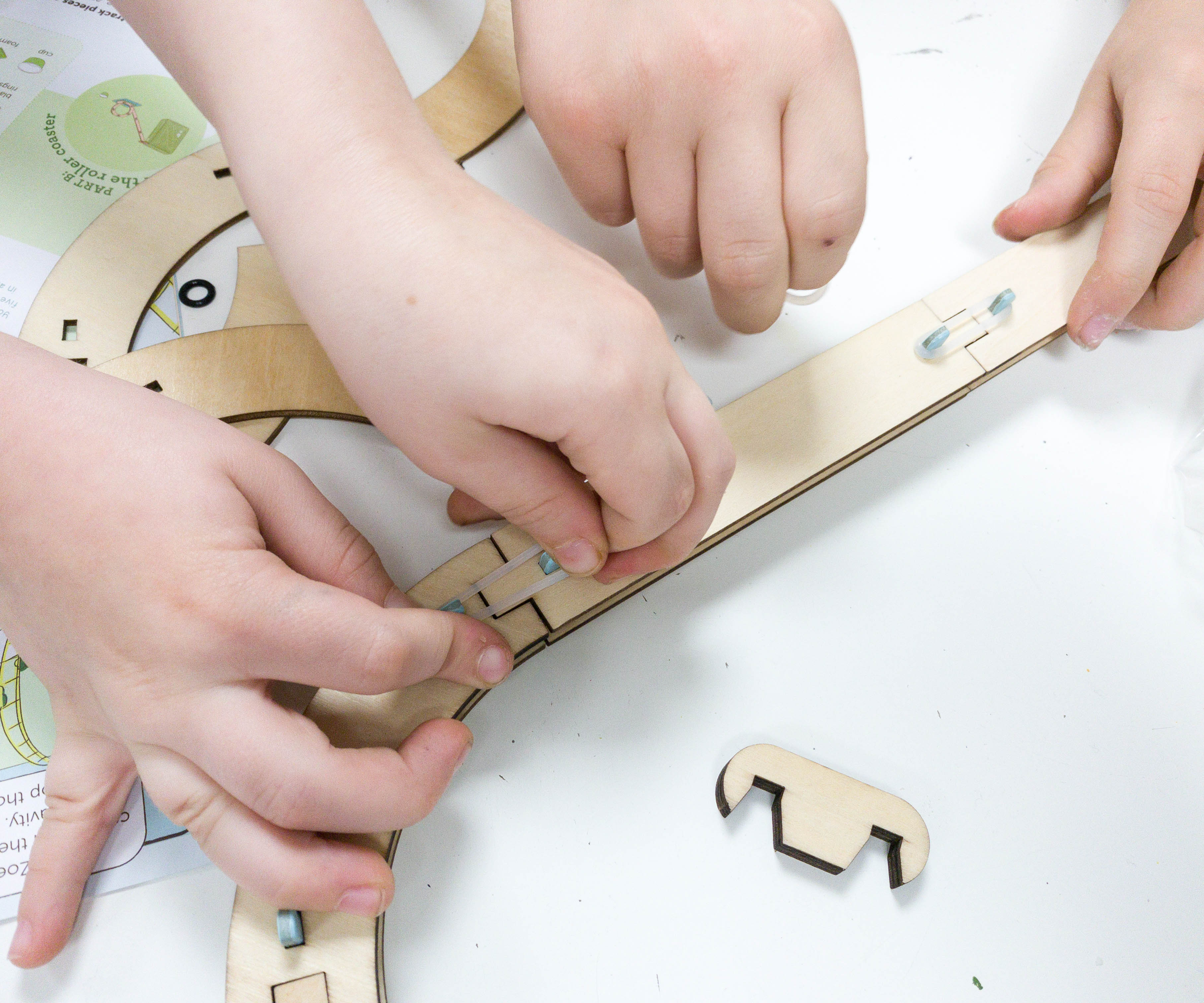
They locked the connector using the rubberized clear rings.
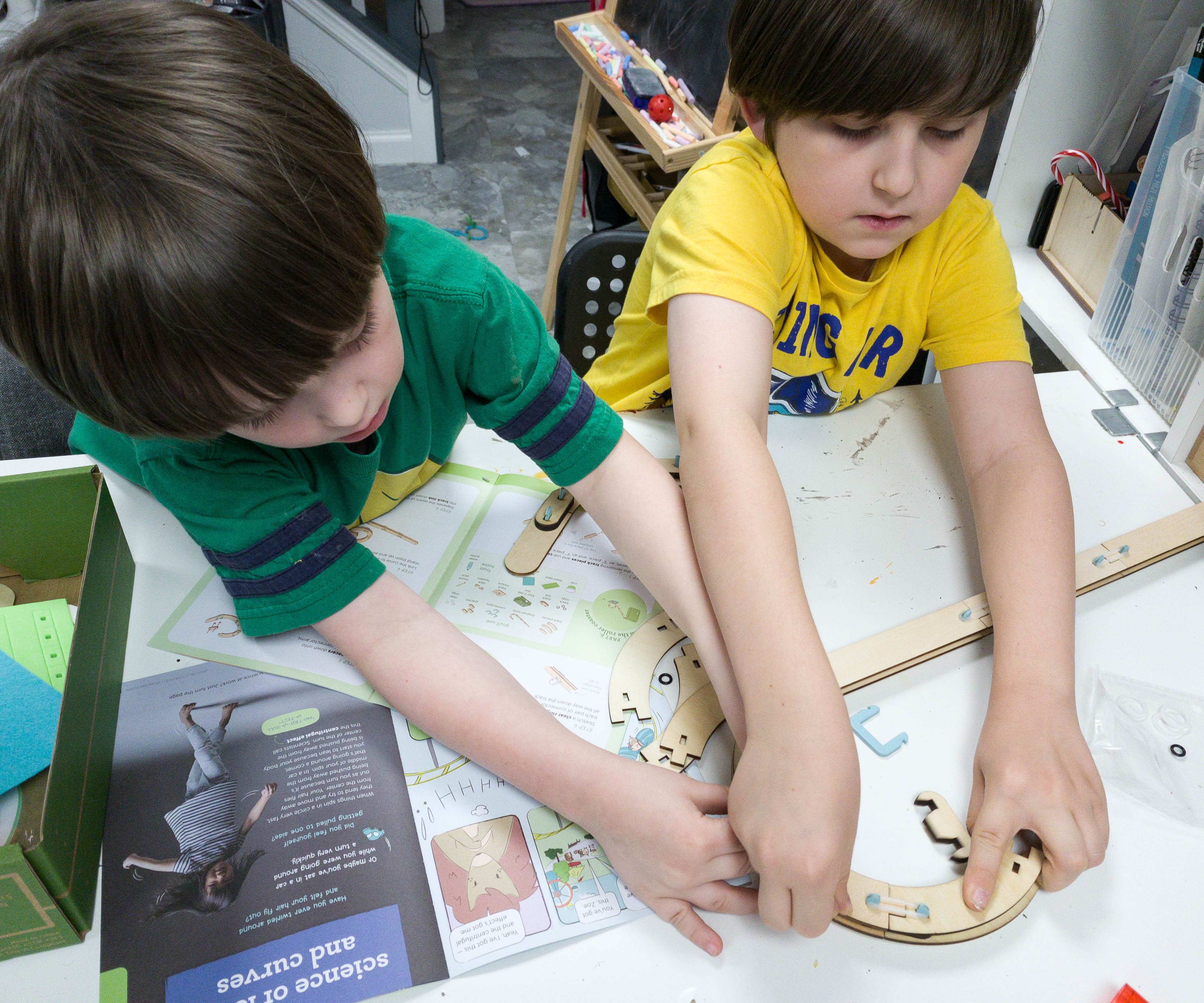
For a sturdy structure, make sure the rings are tight enough to hold the connectors together.
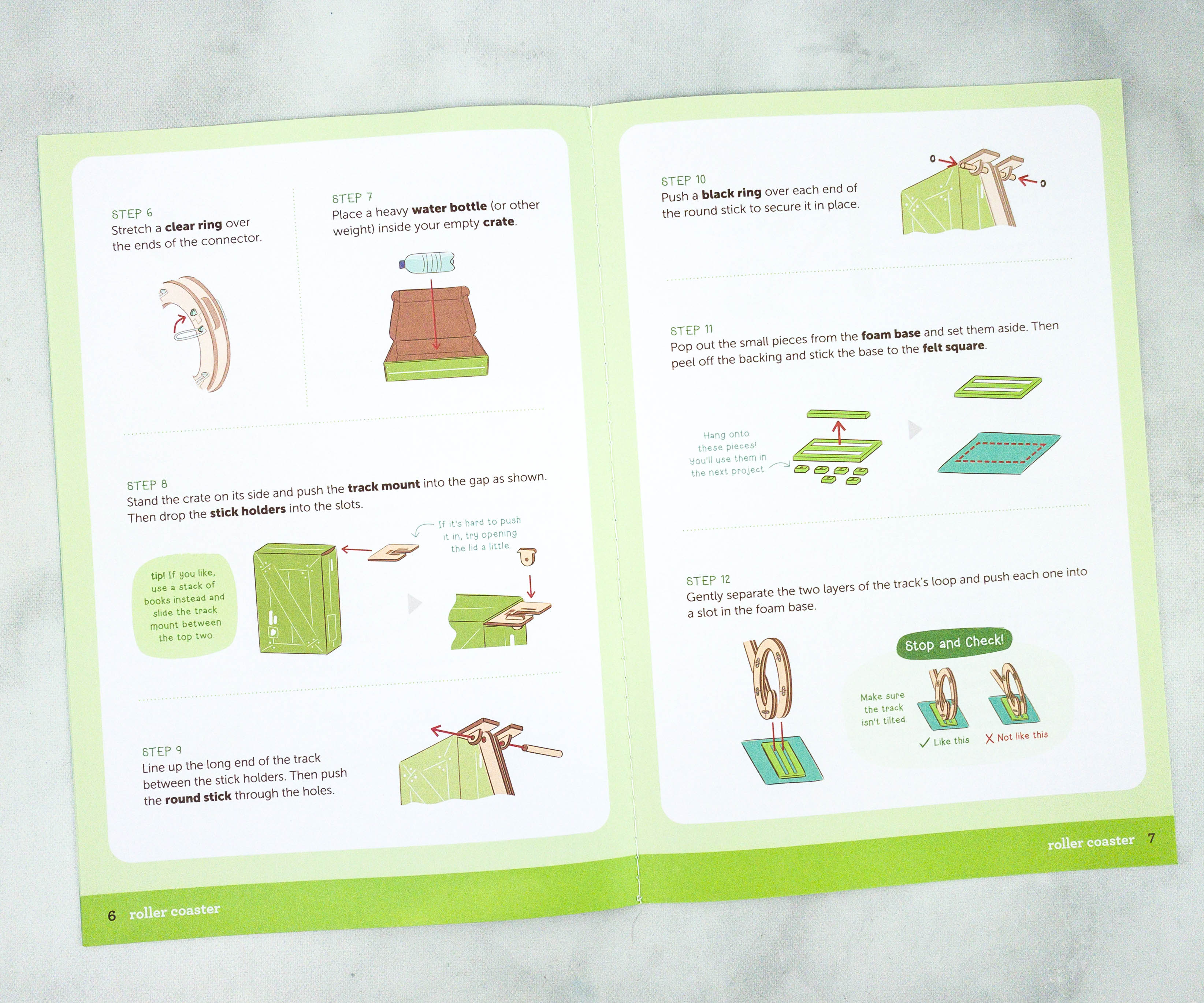
Now that the kids have completed the wooden track, it’s time to make a stable structure where they can place the starting ramp. For this part, they used a bottle filled with water and the Kiwi Crate box.
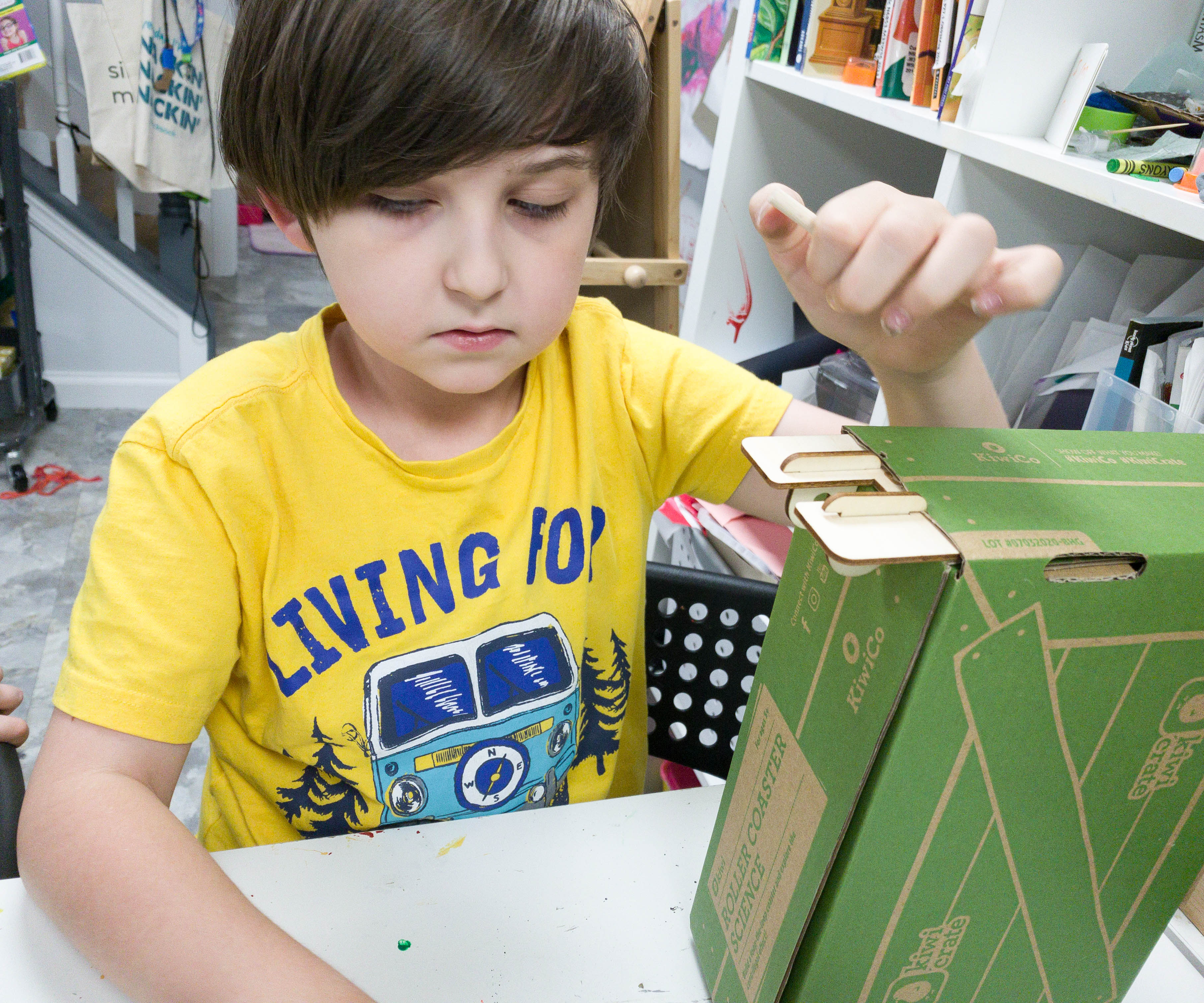
My son erected the box and then placed the water bottle inside of it. This water bottle serves as a weight to keep the box steadily standing.
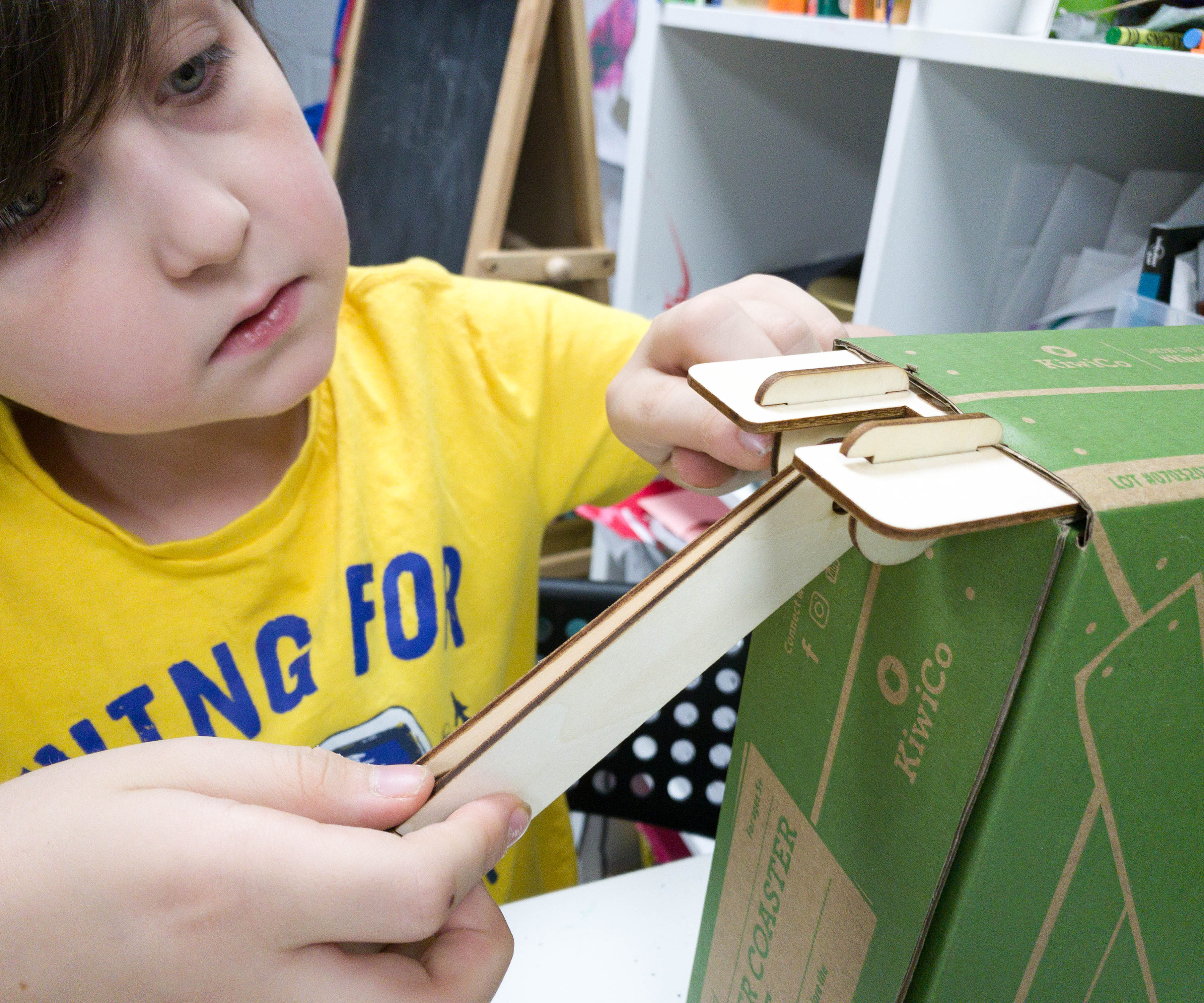
He installed the track mount set on the top of the box and then carefully connected the other end of the ramp on it.

He did some minor adjustments on the connectors, making sure that they will stay still.
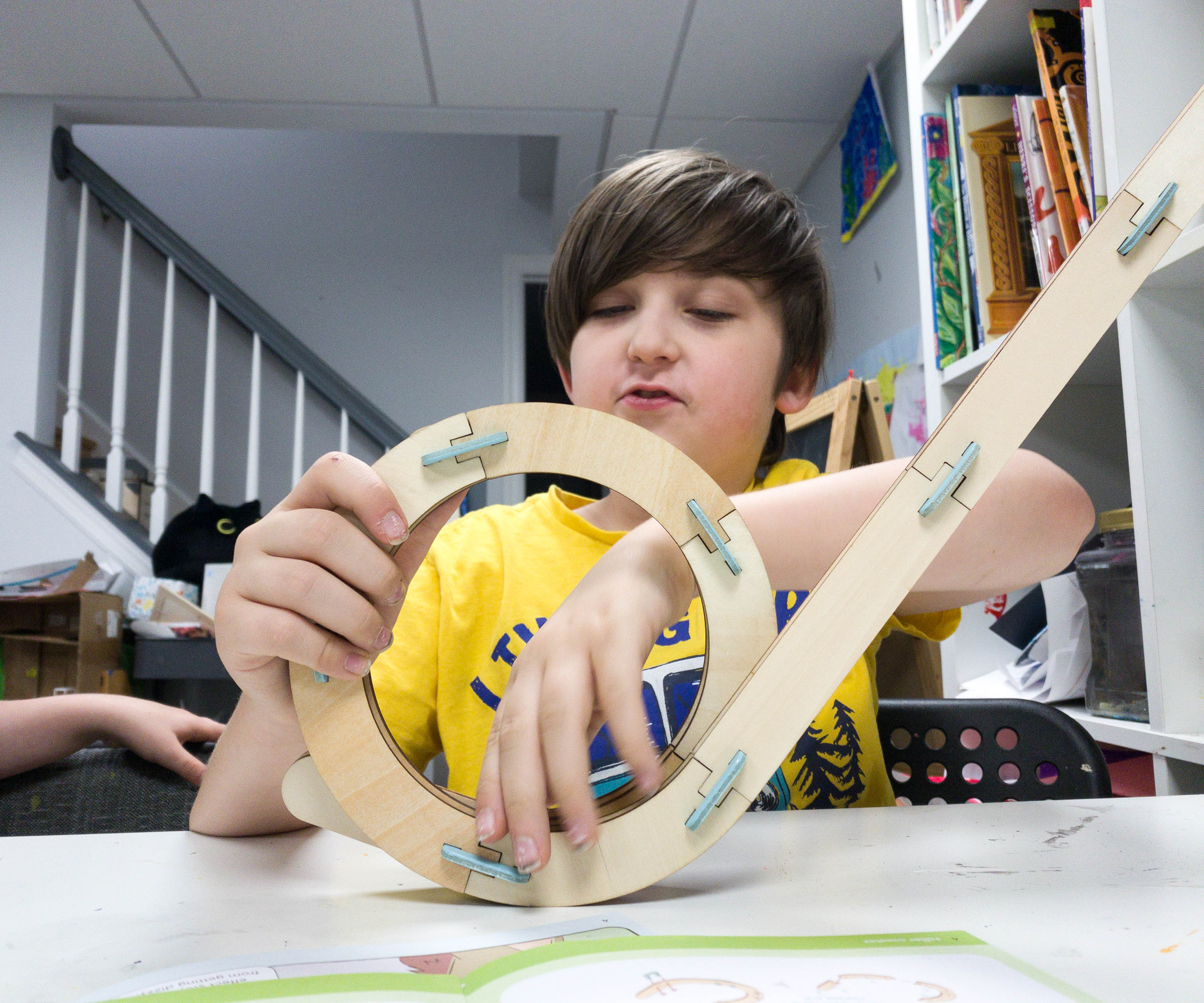
He also checked the wooden pieces, making sure that the tracks are all aligned and the metal ball will just smoothly roll over it.
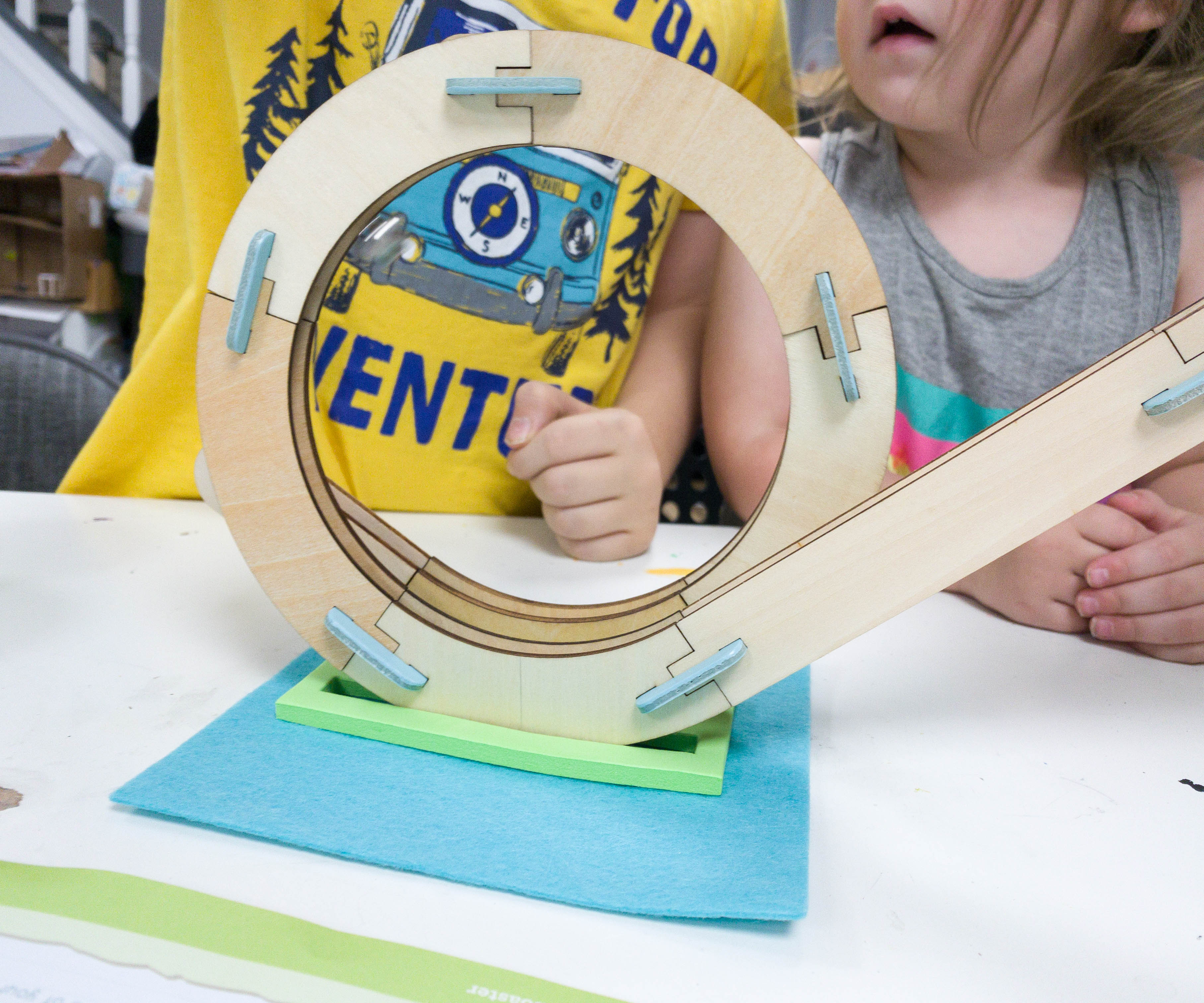
Then, he placed the blue felt paper and foam based set on the other end of the ramp.
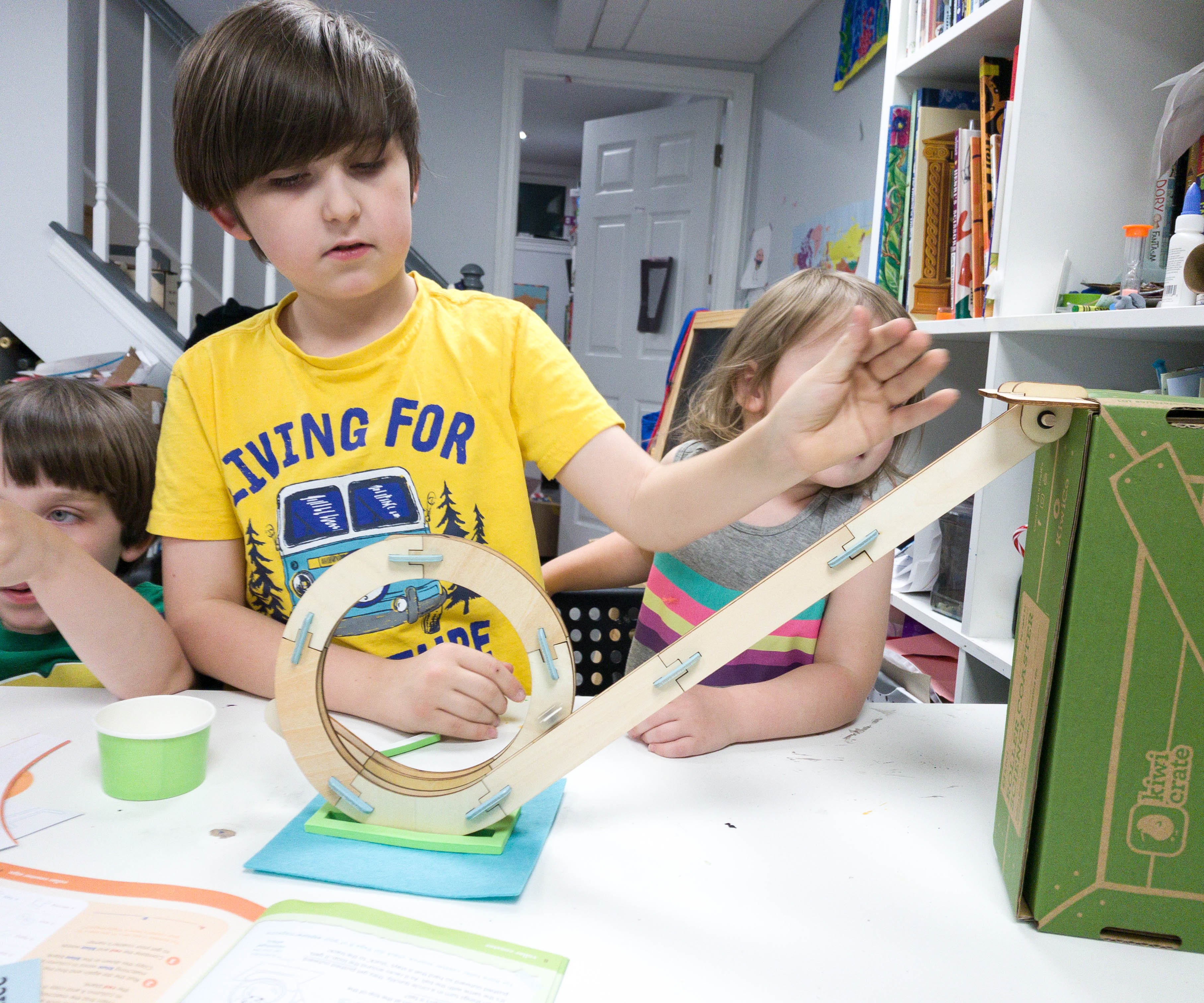
It’s time to test our roller coaster starting ramp! My son grabbed a metal ball, put it on top of the ramp, and let it slide. It actually rolled so fast, it went through the paper cup in an instant!
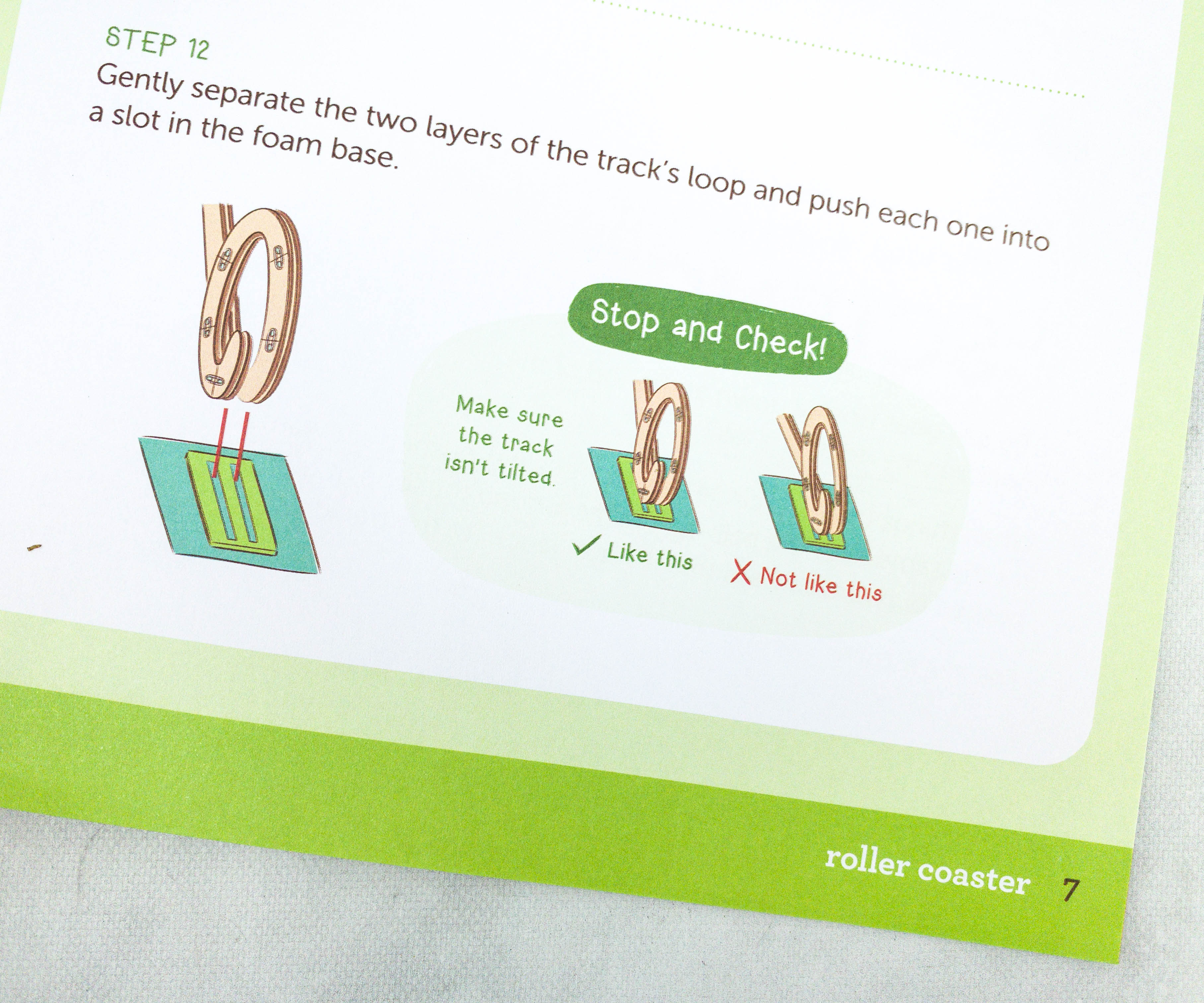
According to this stop and check portion, the kids need to make sure that the track is not tilted.
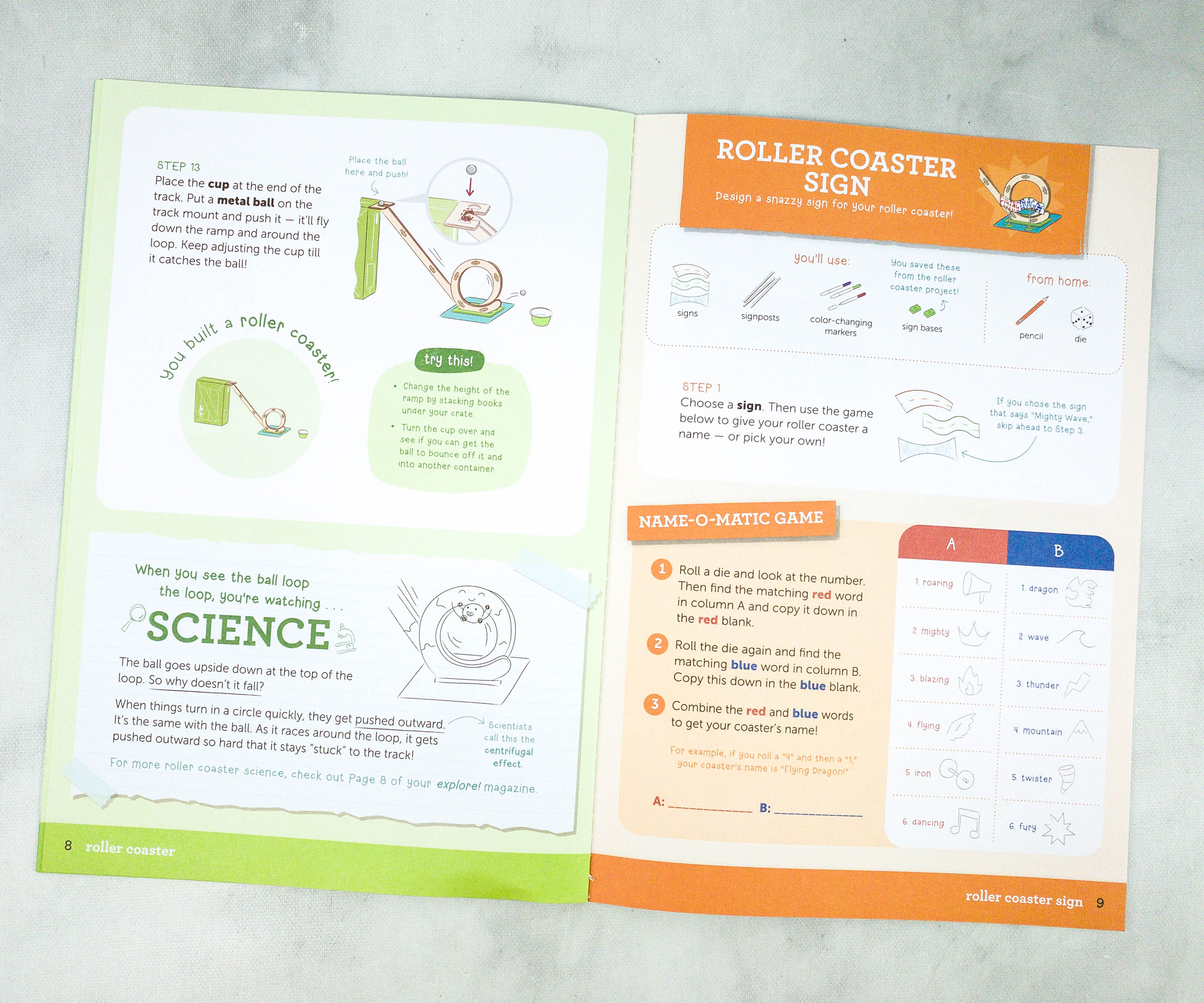
The second part of the project is working on the roller coaster sign.
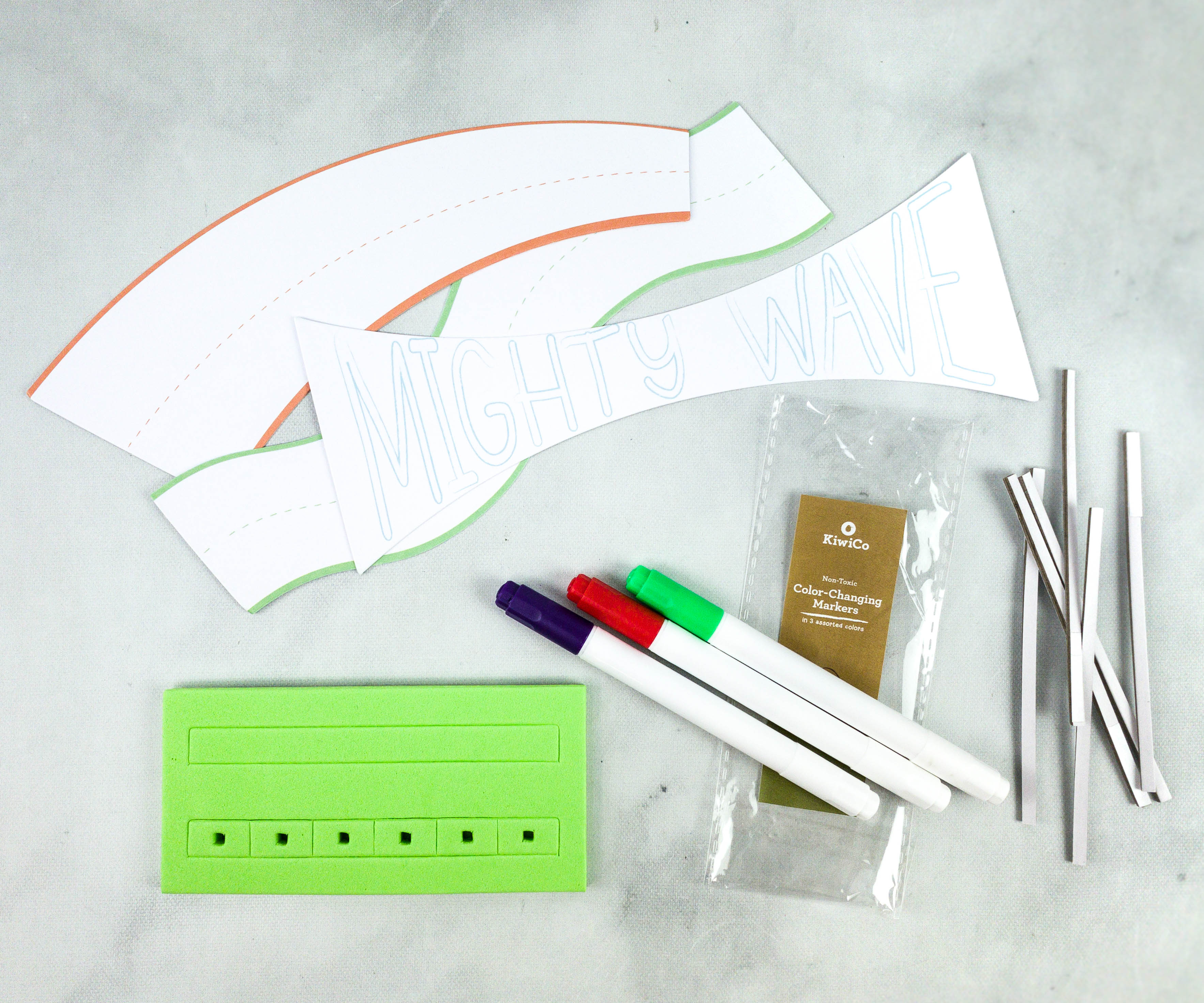
For this part, my kids used signboards, color-changing markers, and signposts.
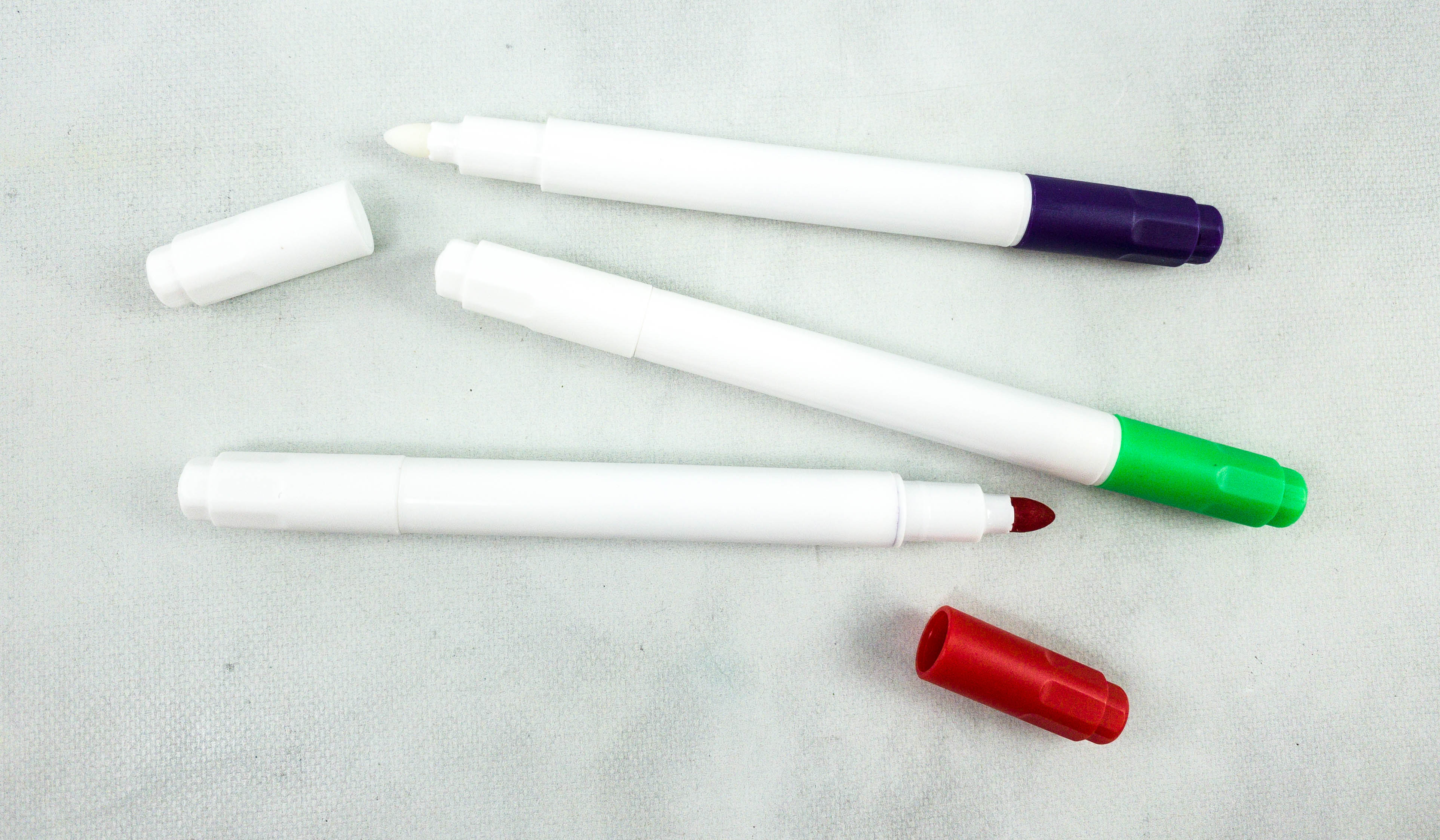
Kiwi Crate provided non-toxic assorted makers as well!

For this stop and check portion, the booklet reminds the kids to make sure that the signposts are stick out below the words.
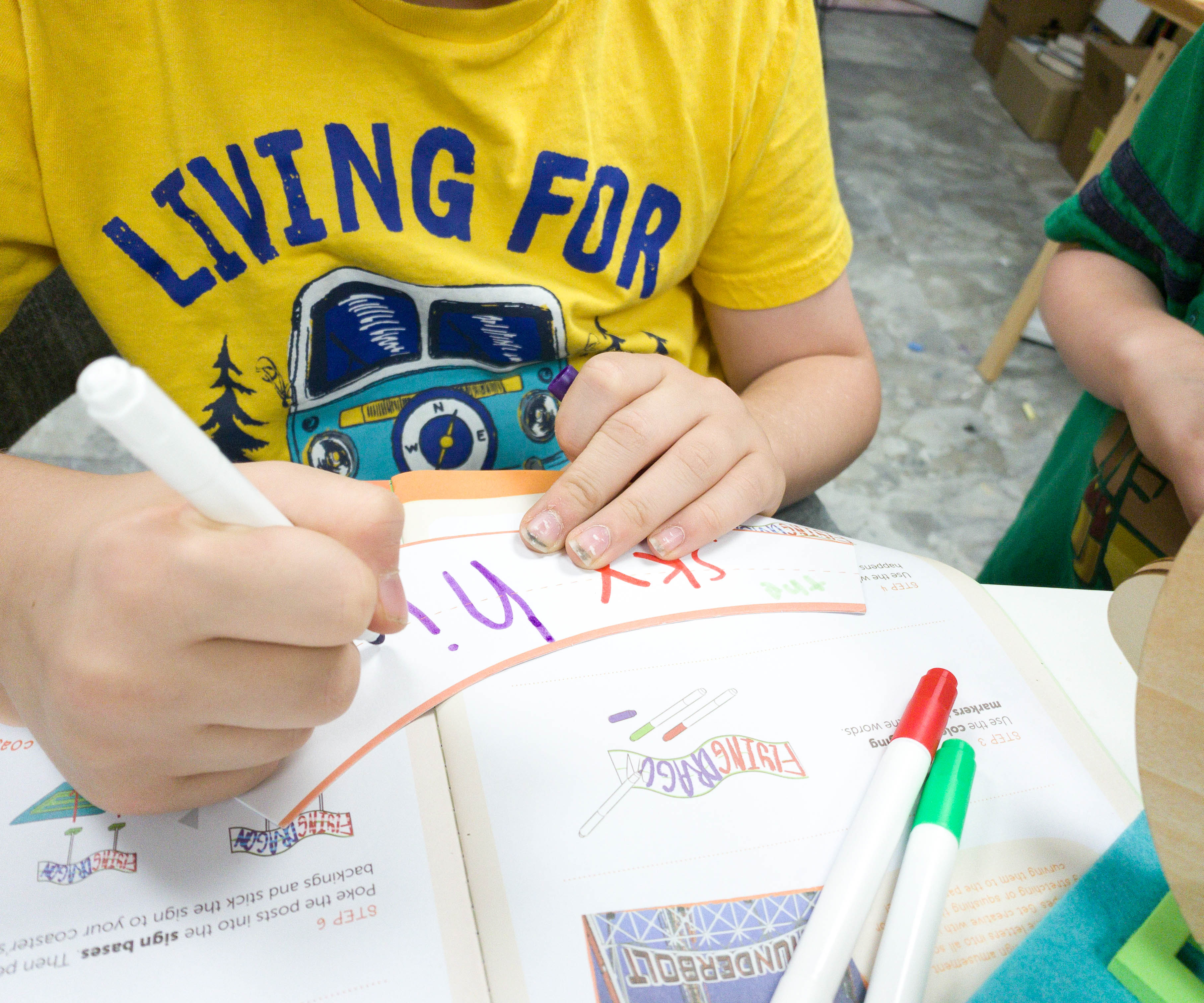
My son wasted no time and quickly wrote words on the signposts using the colorful markers.
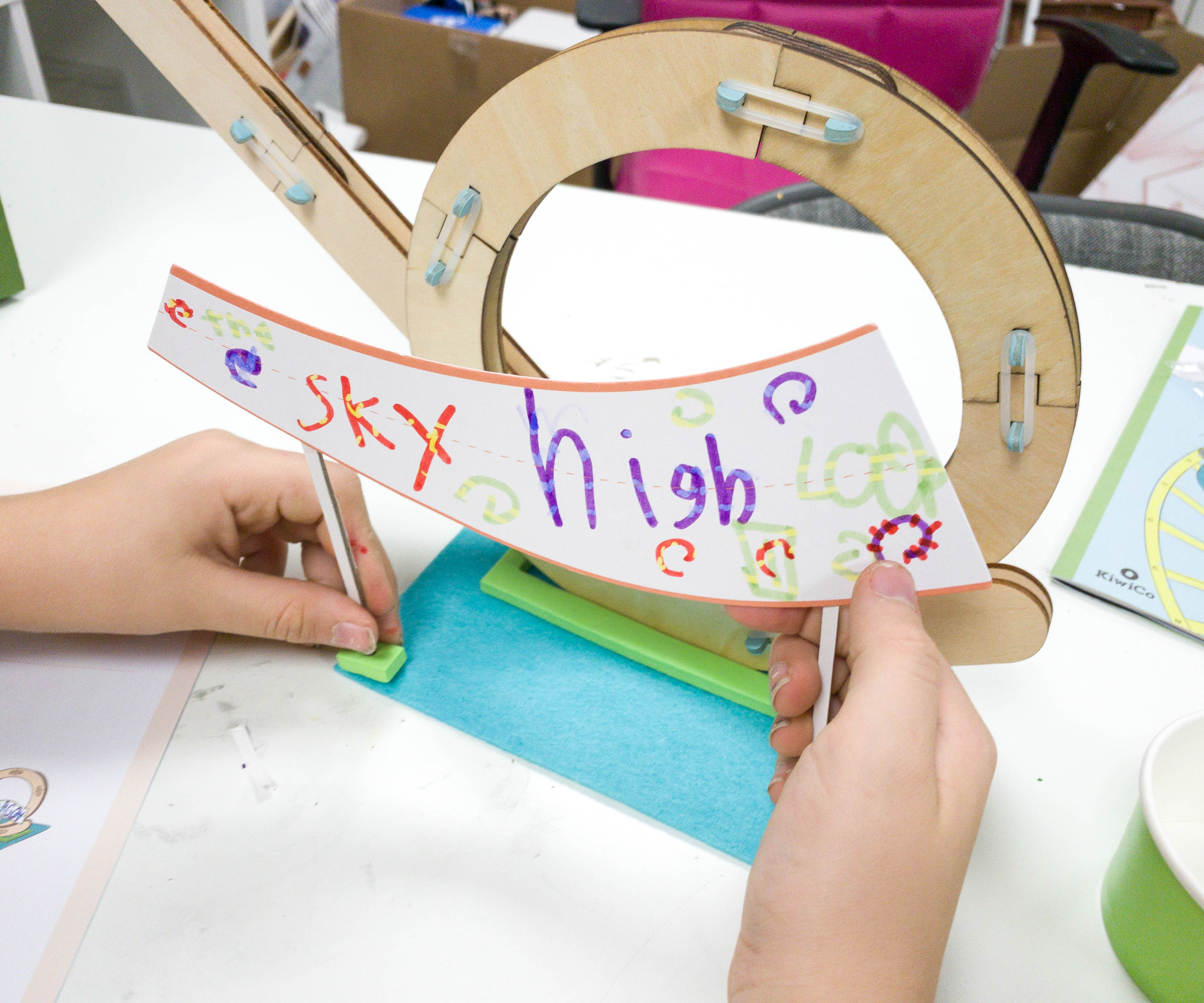
The next step is to put a sticky foam brick at the bottom of the stand and then stick it on the blue felt paper.
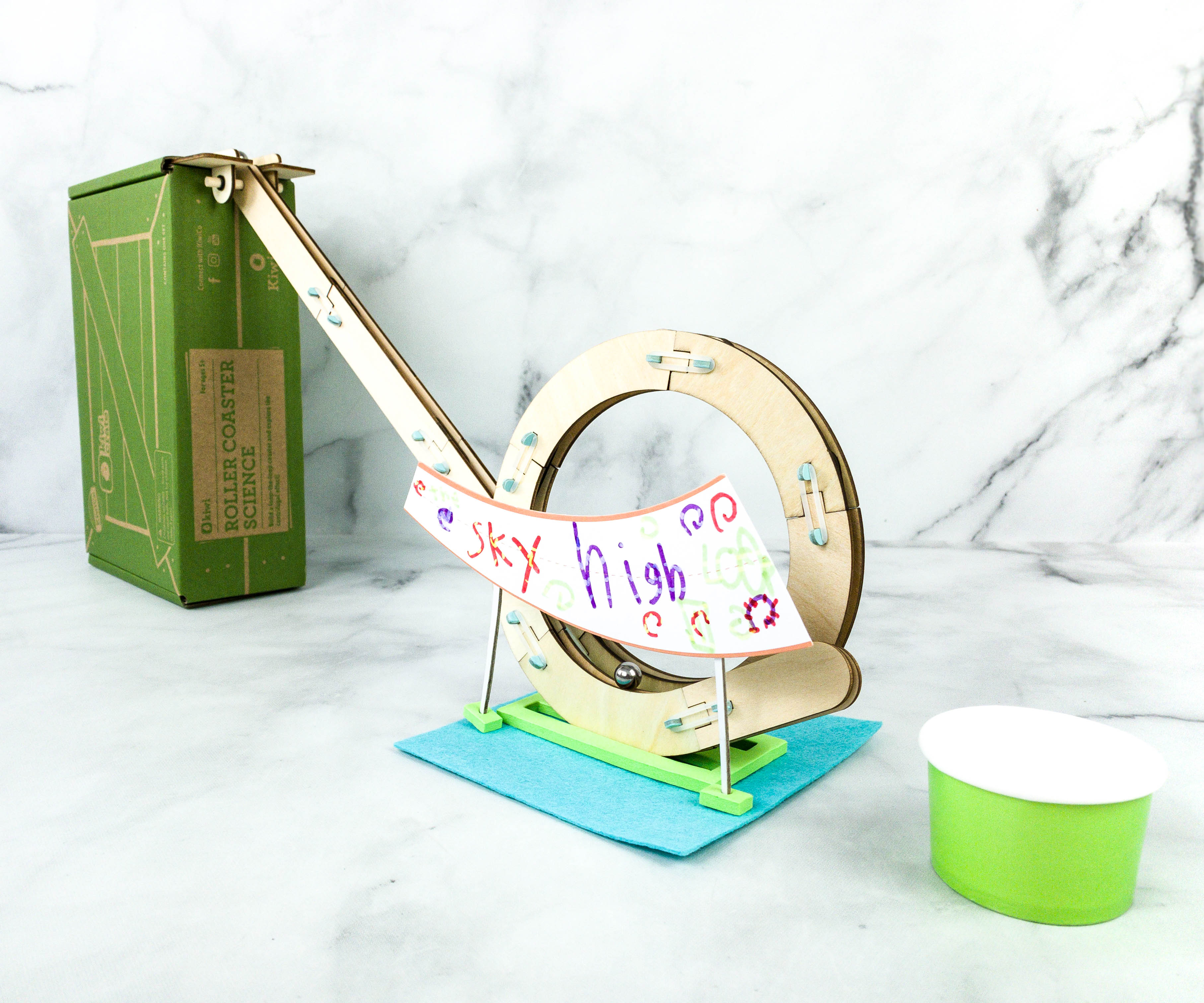
Here’s how the finished product looks!
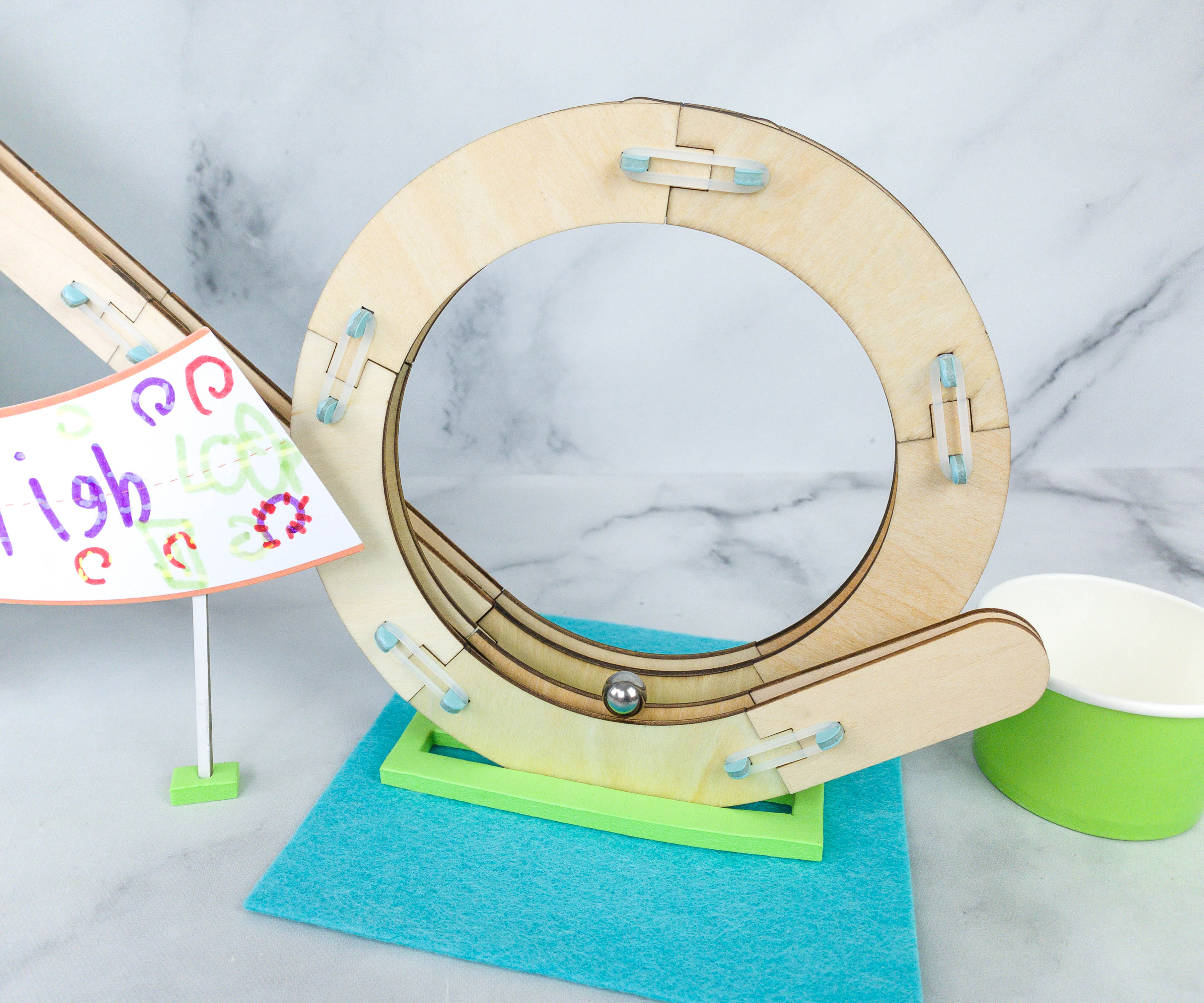
My kids placed the paper cup at the end part of the track to catch the metal ball.
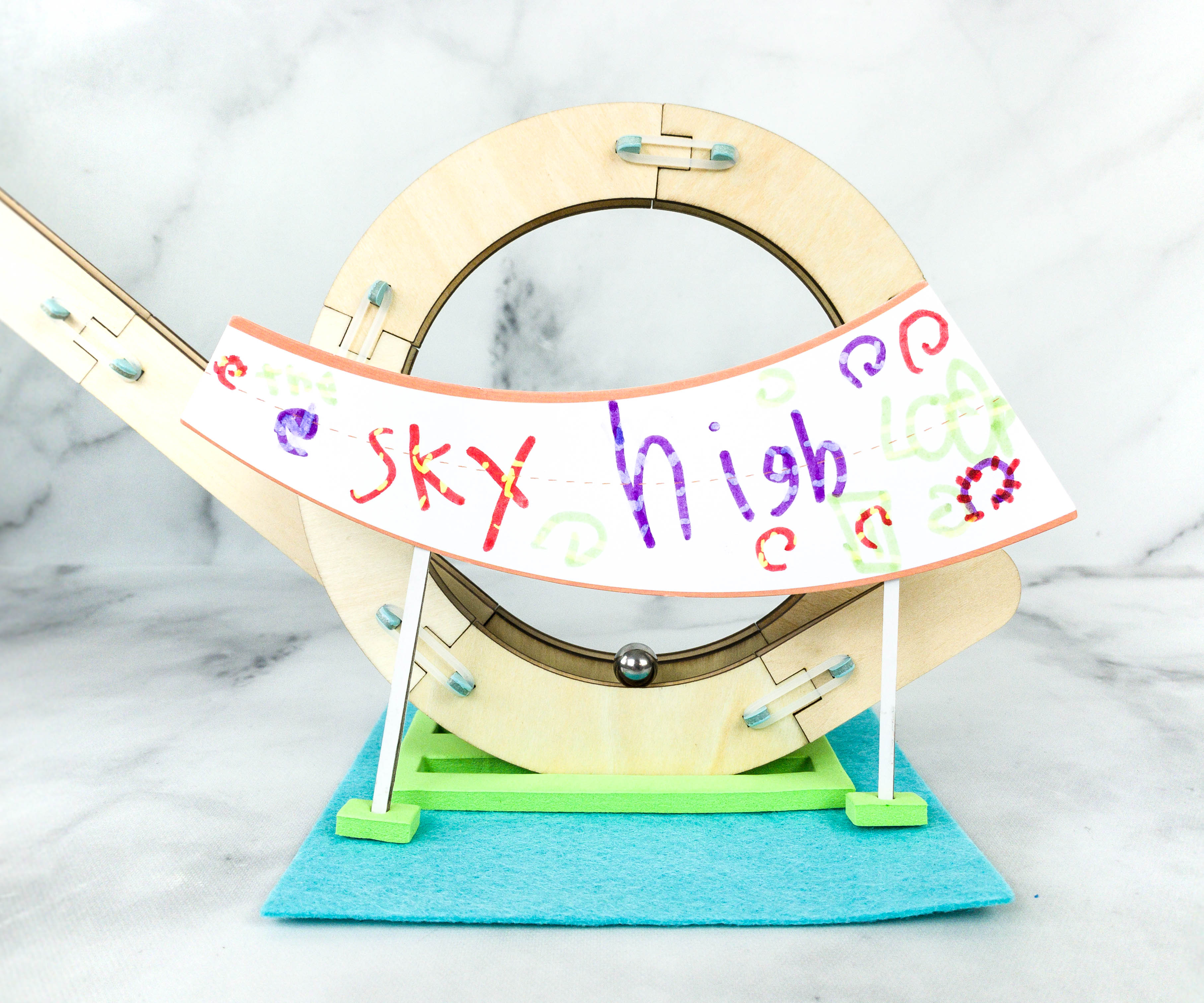
It looks so cool!

Here’s the third activity, the Spin-O-Tron!
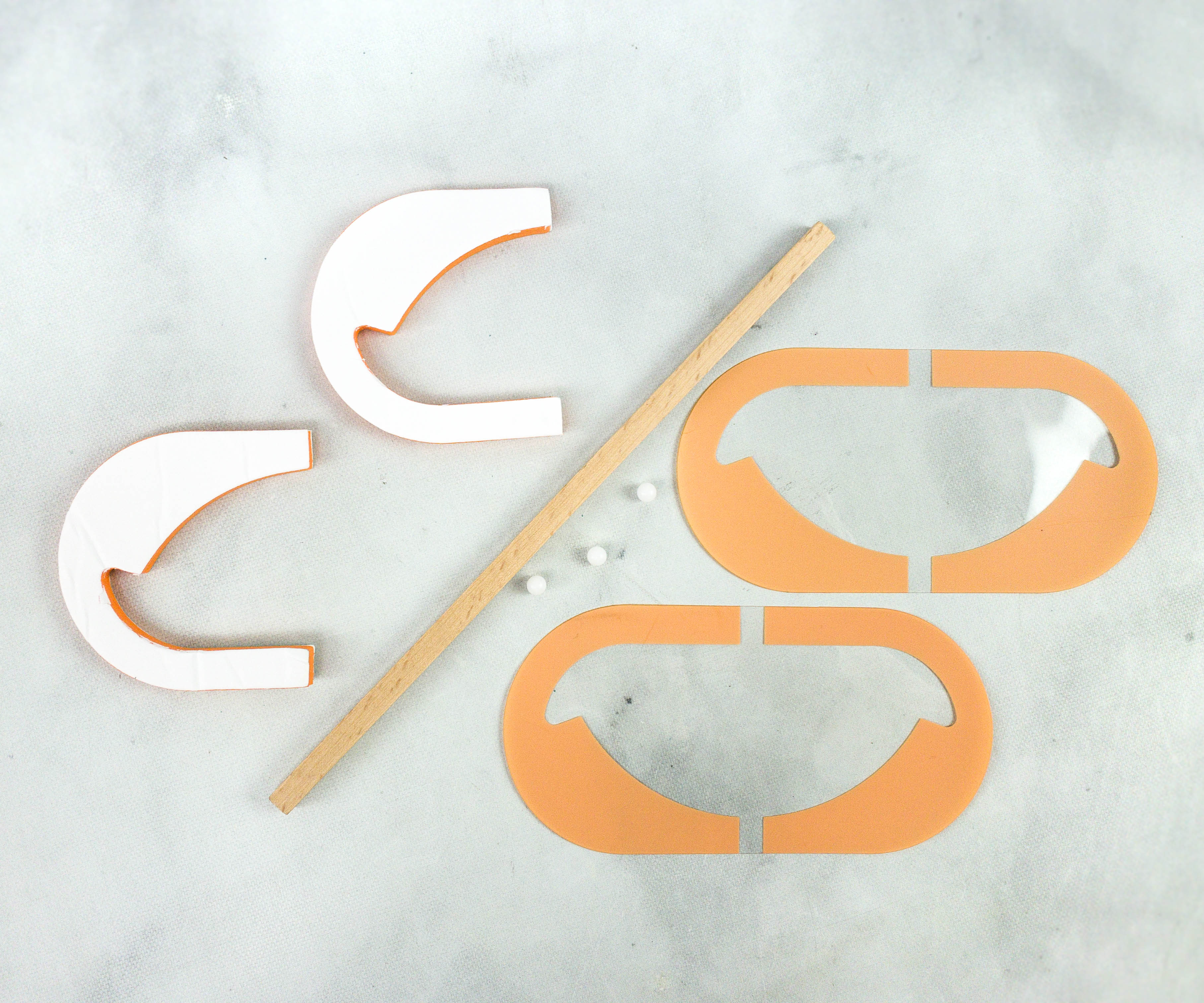
For this project, the crate provided a square stick, windows, bumpers, and white balls.
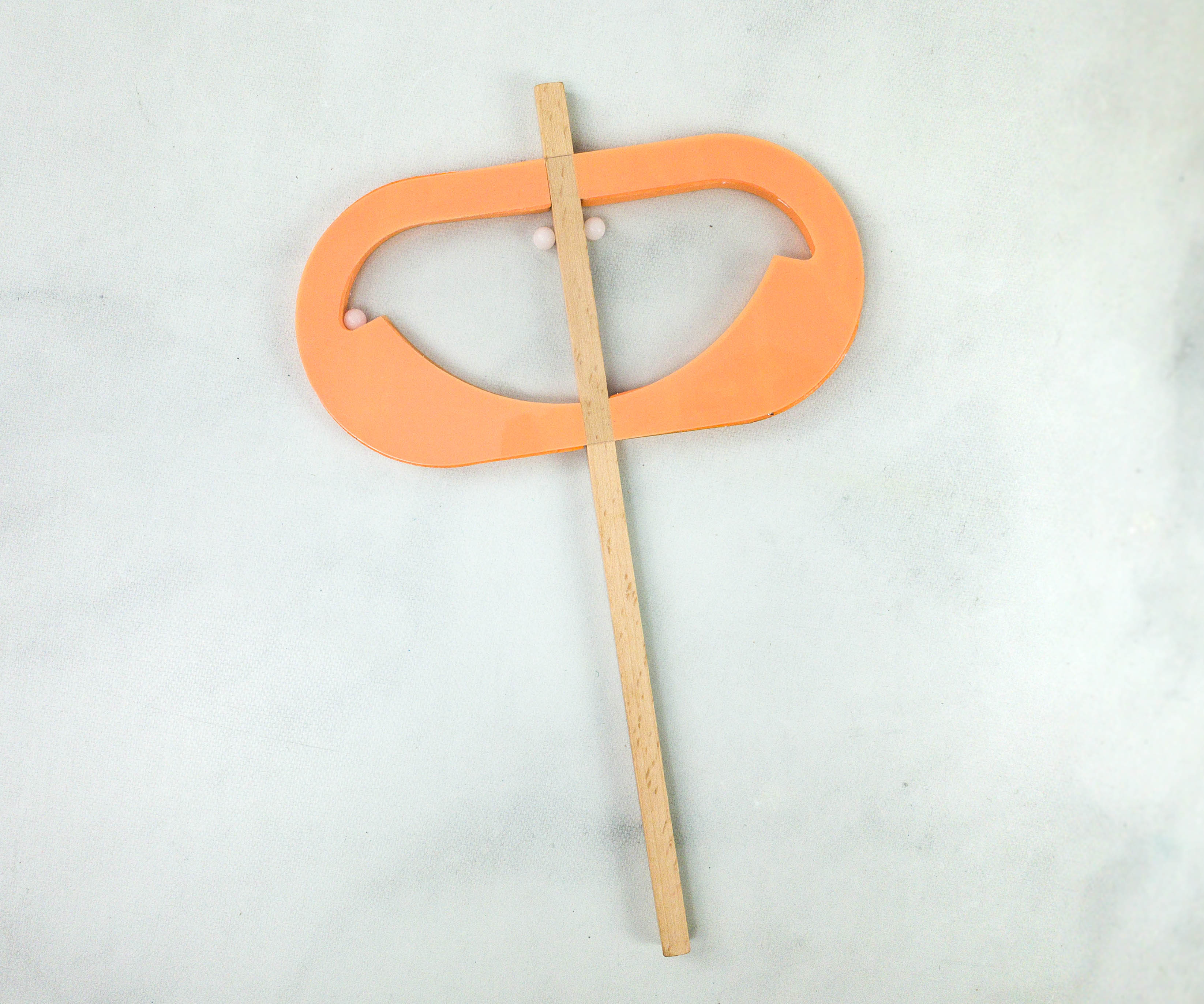
My kids started by peeling off one side of the bumper and sticking it on the window. Then, they put the square stick at the middle of the window and placed one white ball on each side. They also stuck the other side of the window on the bumper, and the Spin-O-Tron is done!
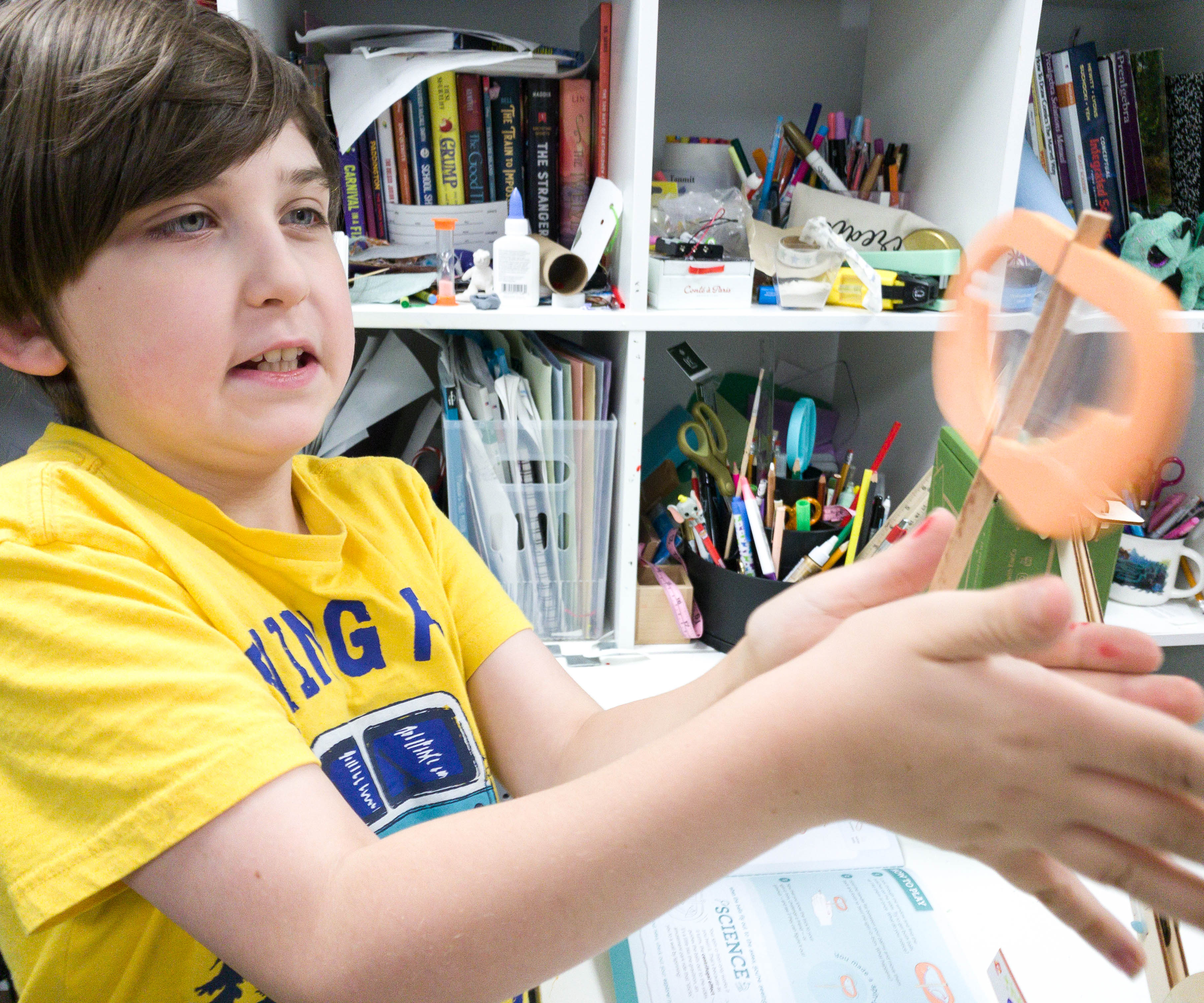
It’s so easy to play too! All you just need to do is hold the handle flat between your palms, and move it back and forth to twirl to spin.
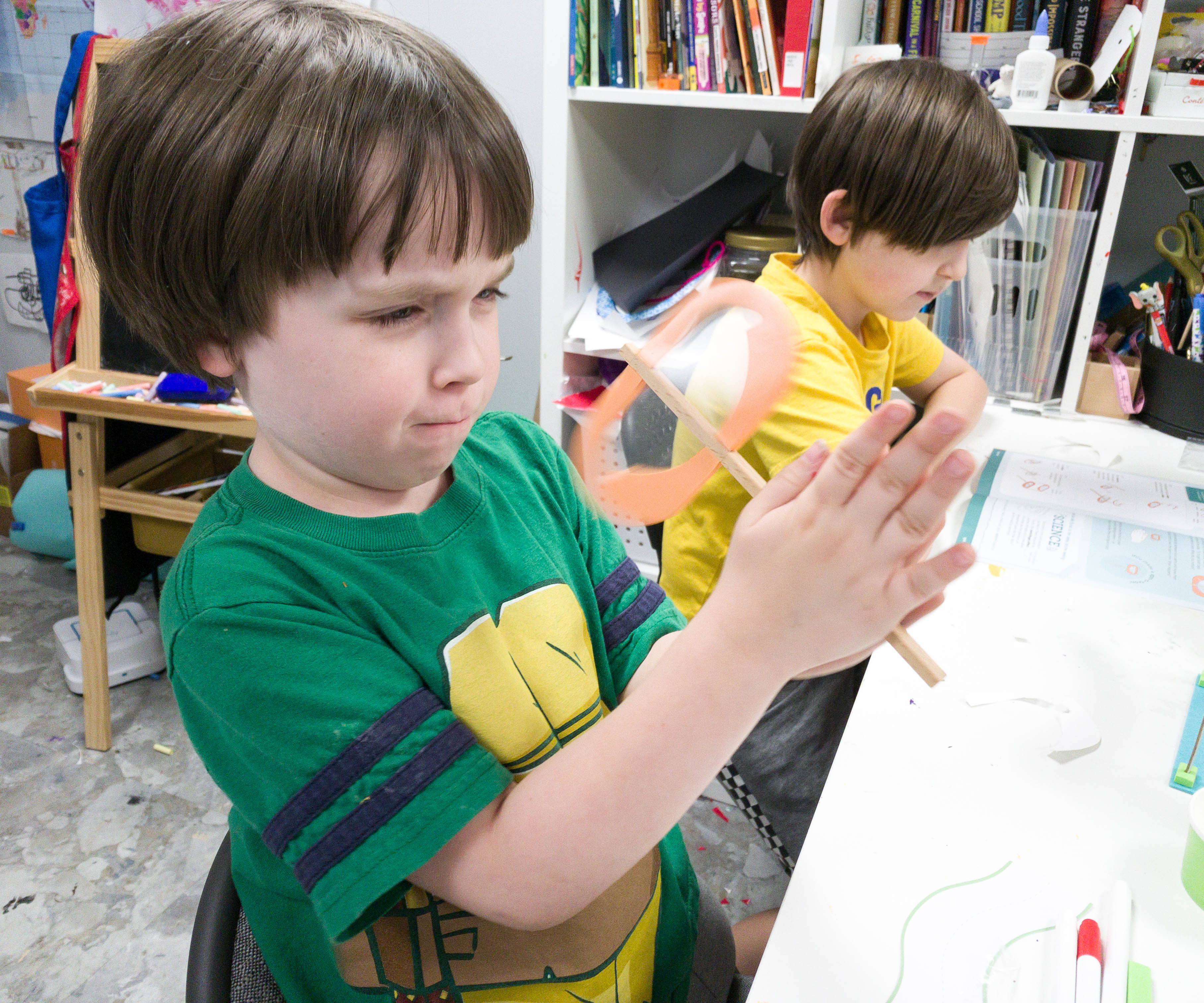
The goal of this game is to try to get both white balls up on the side pockets by spinning it over and applying centrifugal force.
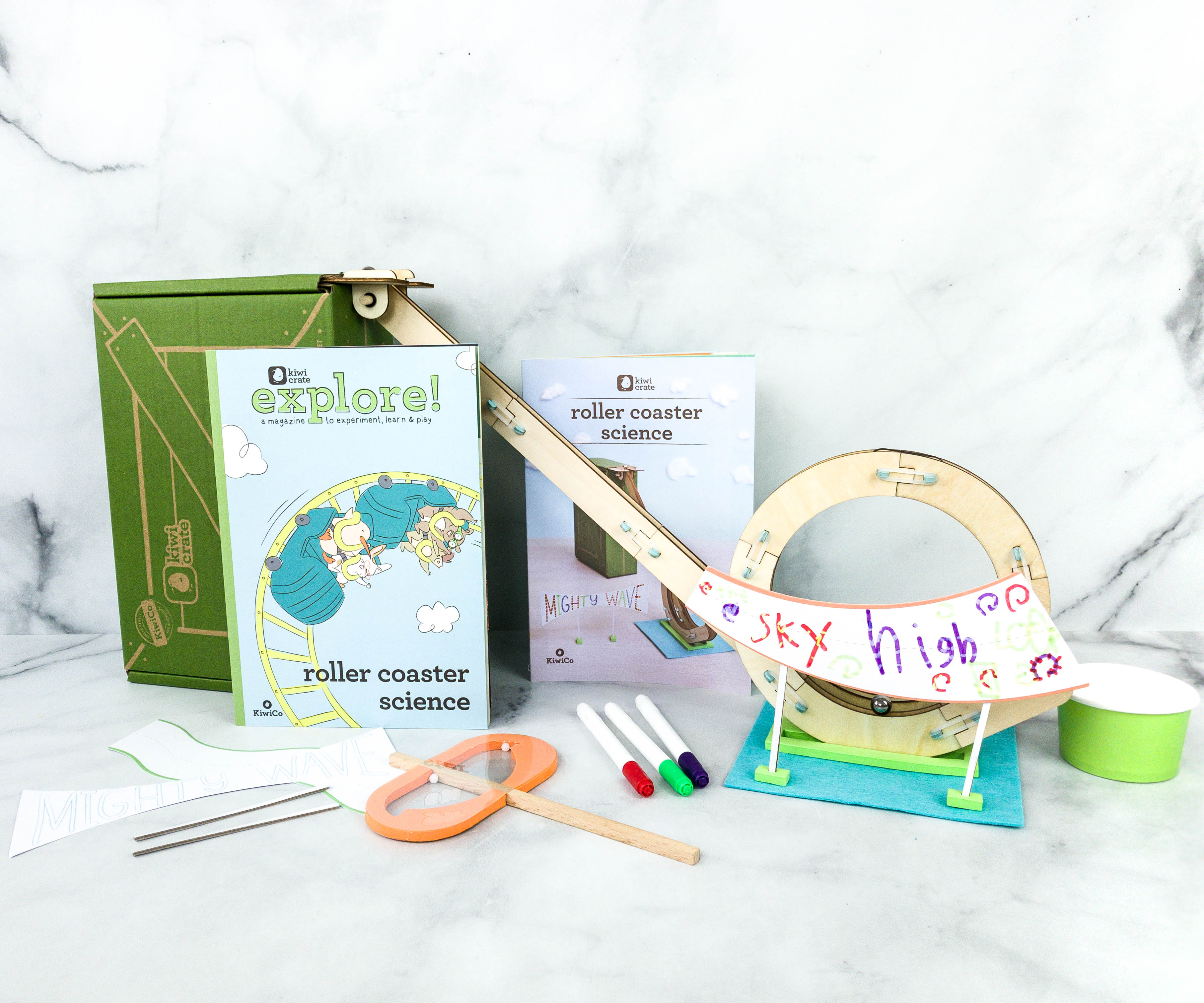
Kiwi Crate’s hands-on STEM projects are always a hit with my kids! This month, they learned about centrifugal force by making a mini-roller coaster and playing with it. They have tested it over and over and they’re happy with how it turned out! As always, the booklet is well-put-together. It contains a fun story plus everything the kids need to know about the featured science concept. There are even on-page activities and other suggested activities for kids to enjoy. Because the complete materials and instructions are already provided in the crate, this activity box makes an ideal option for home learning!
Did you enjoy this month’s activity? Let us know in the comments!
Visit Kiwi Crate to subscribe or to find out more about this fantastic kids’ craft subscription box!




Comments